Believe it or not, but the packaging you utilize for your products takes as much engineering as any other agile procedure. The designers, estimators, production team, and a few other teams work in close coordination to eradicate close margins. One of the processes in making the perfect packaging box is opting for the right material. In this guide, we will walk you through some of the top-grossing and most commonly used packaging materials.
Jump to:
Paper is a versatile product that is created by extracting cellulose fibers from a variety of plant sources. This pulp gained by the plant material is then mixed with water and passed through different machines where it is dried, flattened, and cut into rolls or sheets. Once the basic processing is completed, the paper is then coated with any desired pigments and binding agents.
The three common sources of the paper include:
The following are some of the forestry products that contribute to the common sourcing of paper:
Recycled fiber also makes paper by using;
It includes paper waste left after paper manufacturing or printing processes.
As the name defines, it includes waste paper after use by the consumers.
It acts the same as wood chips and then combined with water or other fibers to create paper.
Sometimes natural fibers such as cotton also act as ideal raw material for paper production. Due to its unique strength and smooth finish, cotton paper is famous for letterheads and other corporate stationery products.
The quality of the paper depends on the following four factors.
The brightness of the paper affects its legibility. The brighter the paper is, the more readable it will be. However, paper brightness is measured on a scale of 1 to 100 (with 100 being the brightest) using a special blue light. Brighter papers display ink more accurately and vibrantly. On the other hand, the less bright papers are dull and yellower, thus muddying the effect of colors somewhat.
Opacity is a measure of the transparency of the paper. Paper that does not show anything from the other side is 100% opaque such as greeting cards. However, the type of paper that shows everything is 0% opaque such as tracing paper. Opacity is an important factor when you are printing on both sides of the paper.
Paper has a weight value, which is measured in ‘GSM’ (grams per square meter). This value defines the strength and quality of the paper. A higher GSM value means the paper is thicker and stronger. However, which thickness will be suitable, depends on the type of business uses.
The specific method of paperweight measurement involves the use of a stack containing 500 paper sheets. If 500 sheets of text paper weigh around 60 pounds, this paper is “60# text.” Similarly, if the sheets are cover stock and weigh around 120 pounds, then the paper is “120# cover.”
It is the measurement of how many hundredths of an inch a single sheet of paper is. The thickness of a paper is expressed in terms of points. One point (pt.) is equal to .001 or one-thousandth of an inch.
Thicker paper is more rugged and sturdy; that is why it can hold beating. Thus, producing better results for embossing, die-cutting, and foil stamping. On the other hand, the thinner paper is cheaper but low in quality as compared to the thicker paper.
Paper has two main categories depending on its weight and thickness;
It is a generic name for a variety of papers that is thinner, flexible, and looser. Due to its flexibility, text paper is ideal to make various paper products. These include flyers, letterheads, book pages, and handouts, etc.
It is a generic name for thicker and heavier paper stocks that includes Tags, Index, Bristol, and Card paper. It is comparatively more durable, smooth, and rigid than Text paper. It’s folding require scoring.
Moreover, it can have a texture and glossy or matte appearance. Cover or Card stock is the best type of paper for business cards, postcards, playing cards, program covers, invitations, greeting cards, and door hangers, etc. Following formation describes the categorical division of paper on the basis of its thickness;
The word paper is derived from the Greek word pápyros that comes from the plant papyrus. Before the invention of paper, people used to write on papyrus, clay tablets, vellum, and parchment. Parchment and vellum were made from the untanned skins of lambs, sheep, goats, and calves. These were not only expensive to make but required a lot of effort.
Then a Chinese Cai Lun produced paper by using scraps of tree barks, old rags, and fishing nets in AD 105. In the 6th century, Buddhist monk Dam Jing from Japan unlocked the Chinese secret of papermaking, and that is how the Japanese immediately learned papermaking techniques and started using mulberry bark to produce paper themselves.
Arabic people learned the art of papermaking in the 8th century from the Chinese. Then the Arabs spread the knowledge during their military campaigns in the South of Europe and the North of Africa.
Then the first paper was manufactured in Europe in the 13th century in Xativa (Spain). After this, the paper came to Italy (Fabriano) in 1276. Moreover, the Germans had their first paper mill in 1389, which was followed by the rest of Europe, including Belgium (Hoei) in 1405 and in (Dordrecht) Holland in 1586.
Today, China and the United States produce the majority of the paper. However, many governments try to regulate their production and recycling to reduce the effects of deforestation, pollution, and other environmental hazards emerging due to industrial paper production.
A material remains untouched if you do not talk about its appearance after production. For that, the paper stock offers two variants, i.e. uncoated and coated paper stocks.
This is a technique that gives a non-glare or matte finish to the paper. This type of paper is more absorbent and easily soaks up ink. Uncoated paper can have a linen finish by adding texture or smooth finish like printer paper. It is the easiest to read or write on.
A technique to enhance the surface of the paper for deep color representation. Paper having coating has a smooth and shiny appearance. It displays text with sharper detail and denser color.
The coating can be of various kinds, including; non-shiny or matte, gloss, and cast coated. Coated papers are more difficult to write on, especially with ballpoint pens or pencils. Moreover, this type of paper highlights color contrast and make graphics and pictures look more enriching. The coating can be further enhanced into further subcategories, such as:
This is the layer on top of the ink on the coated paper stock which gives the paper a waterproof finish. The aqueous coating can be both high-gloss or matte. Unlike other coatings, this coating is water-based and hence much cheaper and environmentally friendly.
This type of coating involves the use of ultraviolet light, giving a much brighter shine to paper. Moreover, it also makes the paper so hard that it may crack when folded. Therefore, this coating is not good for a paper that requires folding, scoring, stamping, or embossing.
This is a special form of coating that changes the tactile feel of the paper. It adds a velvety touch to the paper offering more protection. Moreover, it gives a warmer look to the printed images. This type of coating is great for business cards.
The varnish is a clear ink that adds an artistic effect to the paper. It can create a glossy, matte, or satin area on the printed paper. This technique is very useful for highlighting a brand logo, name, image, or a call to action. Varnish resembles aqueous coating but is noticeably less glossy.
Despite being used for a plethora of purposes, the paper stock is not confined to limited purposes and usage. It rises above normal and standard usage, such as acting as a substrate for other materials or provide decoration. A few types of paper are:
Created by using an alkaline production process, acid-free paper is utilized to remove lignin from the wood pulp to produce a pH that is relatively above 7.
USAGE: Acid-free papers are used in cases where you need to preserve the quality of the paper and let it withstand deterioration.
Blotting paper, in general, has a high absorbency and it can even remove oil from a person’s skin.
USAGE: It can be used to remove excess oil or inks from surfaces or objects.
Also known as calculator paper, these papers are most commonly found in offices and businesses.
USAGE: A cash register paper is used to print receipts, document the sales, items sold and purchased, and monitor forms of payment.
Chart papers do not only monitor heart rates, they have also been deployed to monitor earthquake activities.
USAGE: Chart papers are mainly used to record a variety of conditions such as weather conditions, earthquake activities, electrical power, or medical conditions such as brain activity or cardiac output.
As a norm, food papers are mainly used to protect the food from getting exposed to sunlight and other harmful environmental factors. Ever wonder what those factors are?
USAGE: Food papers are also deployed as a unit for shipment and display purposes. Also, they can be used to serve their normal purpose, such as warranting the safety of food products.
Eco-friendly Kraft is needed now more than ever to save zone the content of our planet. According to a report, Pepsi, Coke, and Nestle still remain one of the world’s worst plastic polluters. Despite sustainability efforts, they have not been able to bring any noticeable change.
USAGE: Since Kraft paper is created from wood pulp, it is 100% sustainable and recycled. It can be used to make shopping bags, food bags, and even grocery sacks.
It goeth without declaring the importance and usage of printing paper.
USAGE: Printing paper can be used to accomplish printing on a certain set of papers such as copier paper, book paper, magazine paper, and the label paper, etc.
In general, litmus paper is used to filter paper and create litmus strips, which is used to measure the pH of a liquid.
USAGE: To facilitate a few applications, litmus papers are designed to exhibit high absorbency and produce a specific color range.
Tobacco papers are traditionally created with wood pulp combined with other paper types. They can combine forces with other materials such as hemp, rice, and transparent cellulose.
USAGE: Tobacco papers are used to roll cigarettes from loose tobacco and other plants.
Ever seen those papers with pre-filled lines and punched holes on the left margin? Exactly.
USAGE: They are specifically used to be put into multi-ring binders which make room for the removal and insertion of loose-leaf paper.
No matter the usage and type of paper stock, you can use it to the best of your advantage. You only need to consider a few things before jumping on the bandwagon.
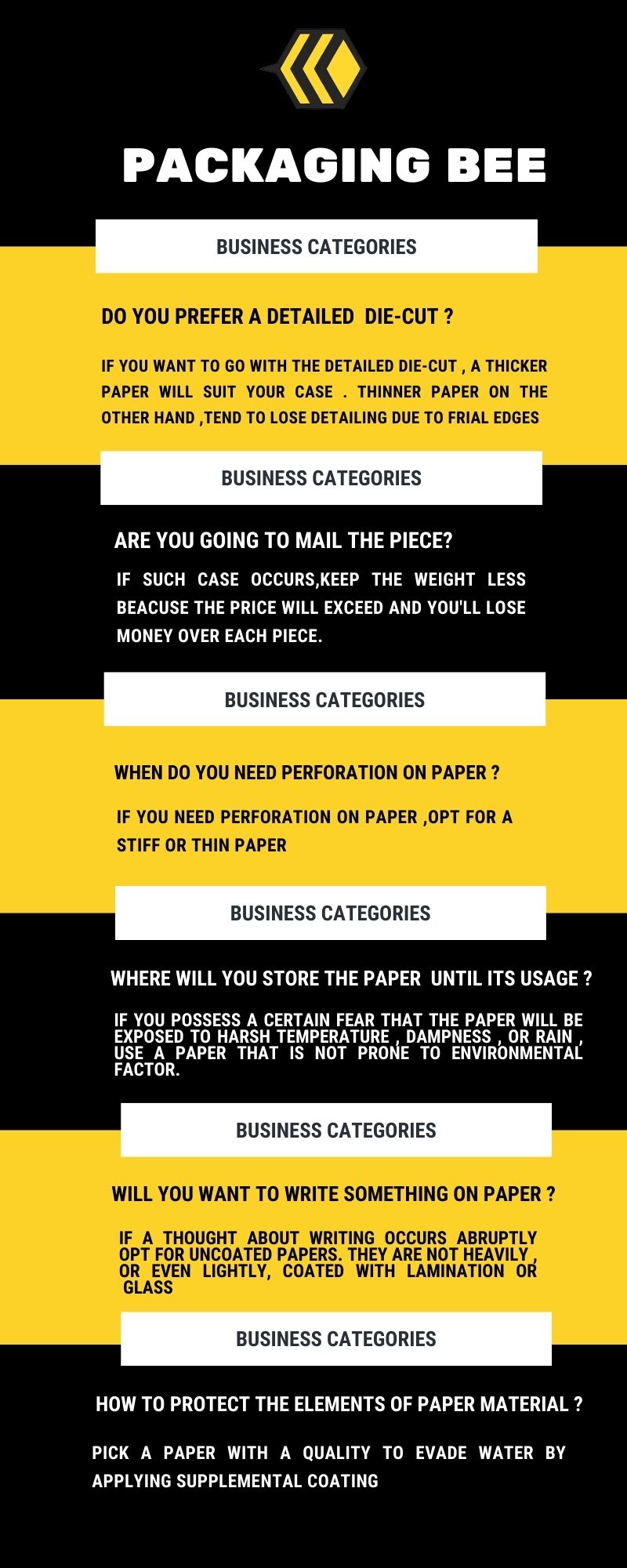
A few printing techniques are used for paper stock, such as:
Embossing and debossing are quite identical to one another. Both processes involve the same process of either stamping the paper from outside or inside to create a viable feel on the box. Embossing produces an embossed or raised impression on paper stock, whereas debossing presses the box from the front and makes the inside embossed.
To provide a soft and silky touch to the box, lamination can be deployed to complement the vibrant colors. Once you are done with the coating, you can laminate it to provide a silky finish.
Foils either make or break your paper. If done right, you can pave the way for a terrific printing mechanism for your paper stock. In foiling, a foil layer is affixed to paper through a heating process. The end result produces a foil stamp in any color, shape, size, or logo you would have inserted beforehand.
Spot UV creates a perfect combination of matte and gloss to give an unprecedented experience of printing. Imagine you have made a box from paper stock and made your logo evident through gloss coating, who wouldn’t notice it?
Here is the brief display of these and a few other printing techniques used:

Q. What is the main difference between sustainable and recycled paper stock?
Sustainable paper stock comes from renewed forests and plants. On the other hand, the recycled paper stock is made from the waste made after consumer-usage. It must be purified for usage. If you compare the two, sustainable paper stock takes the mantle to lead, because recycled paper stock uses a lot of chemicals to achieve its final form.
Q. What is the lightest paper stock available?
The lightest paper stock is 60# uncoated text in an uncoated sheet and 80# gloss text is the lightest coated sheet. Approximately, the thickness of both types is 3.5 points.
Q. What kind of paper stock is most durable?
It goes without saying that the thicker the paper, the more durable it is. Use SmartFlex if you want a durable material of papers. SmartFlex acts like paperwork as paper looks like paper, prints like paper, and above all, it is water-resistant.
Q. Is Matte coating similar to uncoated paper stock?
Be it matte or gloss, a coating is still a coating even if doesn’t reflect a shimmery surface. The matte coating might resist smudges, but the main advantage of matte coating is that the image looks crisp and more detailed on it. If you write on matte paper, you will be able to do it very easily, but the uncoated paper is definitely the best for writing.
Premium packaging has a driving force that attracts the customers, and rigid material boxes offer that desired premium look. They are made up of a sturdy Greyboard and decorated with Art paper from outside. These members of the paper family make rigid boxes, both enamoring and durable. Rigid boxes have not that old age; however, in present times, they are enjoying a feather in their cap in the packaging industry.
Modern manufacturing techniques have been introduced since they are in enormous demand. (Paine, F.A, 1991) The new techniques comprise innovative design creation, flawless printing options, and mesmerizing add-ons. This surge is because of their versatility and durability as they fit themselves almost in every Industry.
No matter if you want to use them for cosmetic packaging, subscription uses, or you tend to pack your precious gifts in it, they will provide you with great satisfaction. Ultimately, they prove themselves a worthy option in the packaging industry. So, want to know more about this peculiar packaging material? Let’s go for it!
The history of Rigid material is not that much far as this material has no initial background. However, we can find various bits from history that portray the existence of rigid material-based boxes in the past. So, let’s dig into the history and find out when it was first used!
A deep pondering into history depicts that Chinese and French were from the earliest people who used boxes that appeared to look like rigid boxes. In the 13th century, the Chinese used cardboard with various decorations to make this box.
These cardboard boxes were as stronger as our present rigid boxes. And also, they provide an attractive premium kind look. Thus, we find that the Chinese used boxes that had a resemblance to rigid material boxes.
In America and France, the trend of beautiful packaging was massive, and people used decorated boxes for the packaging of toys, hats, cosmetics, and jewelry. Again, these vintage packaging boxes had kin with rigid boxes.
Hence, the above are the early forms, or you can say types of rigid boxes that were used by people for packaging. In addition to that, many storekeepers also utilized wooden boxes to keep their things protected and named these boxes as rigid boxes. (Roth & Wybenga, 2012)
These historical glimpses take us to the fact of present times that rigid material is not a single material rather a blend of two or three materials. Because with time, the evolution of rigid material has gone through different phases, and ultimately it reached today’s manufacturing mechanism, the amalgamation of Greyboard and Art Paper.
Therefore, the historical aspect of rigid material is not much vivid. Yet, if we want to know when rigid material was first manufactured, we have to know about those materials that are used in the amalgamation of it (Rigid Material).
Two materials have a primary role in the creation of rigid boxes; Grey Board and Art Paper. Fundamentally, the inner layer of hard material makes of greyboard, and the outer ones, which play a significant role in giving an appealing look is of art paper.
According to an established resource, a Greyboard that is the major ingredient of a rigid material was first made in Dutch Country. Dutch people used different kinds of cereal straws and chaff of various wheat products to manufacture the said material. Thus, at that time, it was known as Dutch Grey Board with regards to Dutch People as its founders.
After that, it took a leap, and other parts of the world also started manufacturing it. All those Greyboard producers, which were in Japan, China, and Europe, used cereal straws to create the materials. Thus, it became famous as Strawboard too.
The pith and marrow of the historical overview depict that rigid material was first originally manufactured by the Dutch people as they produced greyboard, which was the primary ingredient of rigid material boxes.
Till this time, we have known that Rigid material is the amalgamation of two different materials; greyboard or chipboard and art paper. In the past, there were only one or two methods to manufacture rigid material. However, in current times, for its manufacturing process, versatile technologies are used. The manufacturing process comprises of different steps, and different machines do the complete task. Below are the steps and machines that play their role in creating rigid material from scratch:
The first step is the creation of a greyboard. For that Sundry Grey, Board Machine is used. This machine is based on modern technological mechanisms. The pulp of newspapers, cereal straws, and chaff of different wheat items are put in it, and the rollers of the machine compressed the ingredients. Ultimately, we get plain sheets of greyboard.
To make sure, the board has enough flexibility and sturdiness; manufacturers use a special kind of adhesive glue is added in the process.
The second step is the process of laminating the greyboard sheets with art paper or other laminated papers, like thin cardstock or paper stock. Different technological machines are used to make the sheets laminated. However, the most suitable and result-oriented is Emmeci MC2004App Laminating Machine.
According to Sridal, this laminator uses animal glue to compress the art paper on a greyboard. This natural glue, also known as jelly glue. Hence, this usage of natural adhesive materials makes the material nature friendly.
In addition to that, these laminations can be of different types—for instance, Gloss Lamination, Scratch Proof Lamination, and Matte Lamination.
The third step leads us to the cutting of greyboard sheets that have become now rigid materials sheets. According to KESKENY Rigid Boxes, for this purpose, NM 101 Grooves and Cutter Machine is used. Modern technology-based, this cutter is used to cut the long and huge sheets in small canvasses and sheets that are required to make rigid boxes.
Moreover, the NM cutter also adds grooves and furrows to the rigid sheets, from where you have to fold the sheets to make the sides of the and walls of the box.
Here comes the end of the process where the box made of rigid material goes through the decorative part. Different embellishments are added to these boxes to make them appealing and attractive. Apart from lamination, these decorations can be hot foiling, embossing & debossing, varnish, and Spot UV.
Rigid material offers an enormous list of benefits that is useful for both retail and gift purposes. They are enlisted below:
When a manufacturer molds rigid material into boxes, it provides unmatchable premium looks that attract the beholder. This adorable feature makes these boxes highly used in various industries for gift purposes.
Moreover, several different brands use rigid material boxes to provide their products with mesmerizing packaging.
Due to greyboard as its primary material, rigid material has proved itself as a durable and sturdy packaging option. Three layers of greyboard and art paper make them long-lasting and less prone to deformed. Eventually, they provide an appealing look along with long-lasting durability.
Rigid material boxes offer flawless safety to your products. They have strong outer layers and walls, whereas soft and gentle inner sides due to foaming. Thus, you can pack your precious items in it no matter they are fragile; these boxes will make them protected.
This feature makes you comfortable that you can now gift things that you feel are delicate and can be damaged in the packaging. Rigid boxes ensure the safety of your treasured items.
The surface of the laminated set-up or rigid box gives a magnetic appearance as its surface has a layer of varnish with glowing and smooth lamination. This sense of high quality makes these boxes exceptional as compared to other types of packaging cartons. Glossy lamination adds extra attraction to its appearance.
The packaging is a vast field. It includes many innovations, both known and unknown. Every now and then, we get to know of the latest developments in the Industry. One of the driving forces behind numerous inventions is customer demand. Whatever the customer need, the manufacturer has to fulfill that.
Similarly, when it comes to the popular styles in rigid boxes, how can there be just one style? Whereas, it is one of the sought-after and loved among the audience.
Following are the popular styles that can be used for a variety of purposes, have a look:
With the help of images, you can decide which box style will be used where and for what purpose.
The cigarette or tobacco industry has always come up to its customer’s expectations. Somedays, they want the old and traditional packaging, while other days they demand new and trendy designs. Whatever, their wish is, the manufacturer has to make those wishes true. The only thing that can rescue them is a rigid box. Rigid material put the cigarettes intact as well as the outlook first-class.
Rigid boxes are famously known for their use as a premium package. They are high-class material that’s made to impress the receiver. Therefore, if you are thinking of introducing your product in a new market, try sending the products in rigid premium packaging to well-known people of the town. They will do the next job.
The cosmetic industry is one of those industries that people cannot live without. This is the era of looking pretty and up-to-date. Therefore, cosmetic companies make sure that their products are loved, and customers remain loyal to their brand.
In order to maintain the retention of customers, companies focus on their packaging strategy. Rigid material has an essential role in this regard. They can make any style of the box attractive and alluring. Hence, many manufacturers prefer rigid boxes for their product’s packaging.
Rigid boxes are the perfect choice for gifting and PR purposes. They are luxurious and stylish. If you want to impress anybody, then opt for rigid containers. Items such as watches, perfumes, or other delicate are delivered in rigid material because they are prone to damage.
Similarly, if you want to collaborate with an influencer of activists, many companies prefer rigid material for sending them collections.
A customer is always in search of an exciting thing. They need adventure, colors, and joy in everything. If a company succeed in attracting the potential consumer through packaging, there are many chances that the same person will end up buying the product. Such is the power and impact of good packaging.
Now, the question arises how one can make their package attractive? You may have heard of add-ons, which are the additional features that add grace and uniqueness to the whole box.
Likewise, there are few guidelines that can help you a lot in designing rigid boxes. In fact, these guidelines are made just for them. They are as follows:
However, one has to be conscious and expert in understanding which pattern to use where. Suppose one is not sure about anything, it’s always better to ask for a consultation. Many good printing companies offer free of cost consultation services.
To get a high-quality finish, Digital Printing is a good option. It is a process of making prints from an electronic file. As far as the benefits of this method are concerned, digital Printing will never disappoint you. The quick turnaround time and cost-effectiveness are other reasons to opt for this printing method.
How does it work? Well, the artwork is created on a computer and directly printed onto the material. It is simple and quick, skipping many steps involving hardly three stages. Stage one is to prepare a precise and sharp resolution image for printing purposes.
The second stage consists of imposition, and finally, in the third stage, you can convert it into a TIFF, GIF, JPEG, or BMP file.
Offset Printing is a combination of two old methods, namely lithography and offset. It may be old, but offset printing always comes to the rescue when it comes to mass printing as compared to digital printing. Offset has many advantages, to name a few; it can be applied on any surface (leather, fabric, or wood).
Secondly, the printing sheets are easy to make. Thirdly, the printouts last longer than most relationships nowadays. Fourthly, the image quality is remarkable.
The process consists of five steps. The first step includes design and prepress. In the second step, you output the film. After that, the film will be exposed to the zinc plate in the third step. Then move to the fourth step, where offset printing comes into action. The technician will print each color one by one.
In the final step, called a post-print process, the lamination is done, and ta-da your package is ready to roll!
If you are looking for a definite and firm printing other than Flexo Ink Printing, go with Screen Printing. It is feasible for short and long-run projects. Moreover, the results are long-lasting because the ink is composed in a way that makes it happen!
To make things more interesting, the surface of the package can be anything. It is not limited to a particular surface.
The process uses mesh to transfer ink onto a print surface. The machines are used to move the blade across the screen; these blades then fill the open mesh sections with ink. During this process, you can only add one color at a time.
Q. Which packaging is better? Flexible or Rigid?
Both Flexible and rigid packaging have their own features. It depends upon product, target audience, and package spend to dictate which form of packaging to use. In terms of cost-effectiveness, user experience, barrier properties, or labeling, many people will choose flexibility. However, if you consider factors such as Aesthetics, product combability with the material of packaging, and fragile product to be packaged, rigid packaging is preferred.
Q. Which factors play a key role in the quality of custom rigid boxes?
The packaging is not a one-step process. There are a lot of stages that need to be covered well in order to create a masterpiece. Similarly, in the case of rigid boxes, make sure the stock is sturdier and flimsy. Secondly, to make it attractive, add lamination or additional features for a better outlook. The primary factor is whatever you choose, should be pure, original, and genuine.
Q. How will you forecast the rigid packaging market growth up until 2022?
Rigid packaging is one of the essential parts of the overall packaging market. It is said that: The Global Rigid Packaging Market is expected to grow from USD 391,236.13 Million in 2018 to USD 510,236.13 Million by the end of 2025 at a Compound Annual Growth Rate (CAGR) of 3.86%.
Corrugated is a material that is made up of two linerboards bonded to a fluted medium. Moreover, the two linerboards are made up of Kraft, which bonded to the fluted medium with the help of different adhesives. Also, the thickness of the facings (linerboards) and the fluted medium can be adjusted as per the requirement.
Furthermore, the adhesives used to attach the linerboards with the fluted medium can be starch-based adhesives, water-resistant adhesives, and weather-resistant adhesives. The proper binding of this material is all dependent on the quality of the adhesives.
Besides, if talk about the types of this material, then these are the single face, single wall, double wall, and triple wall.
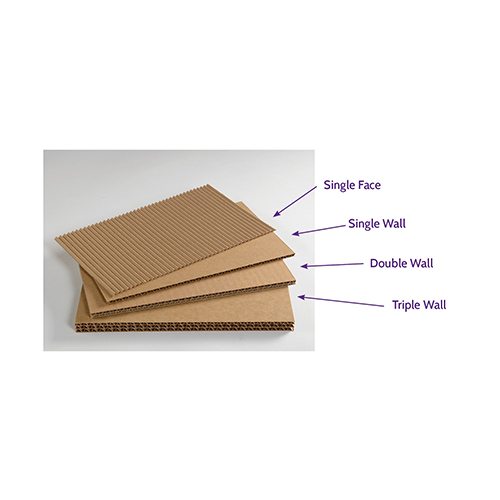
Additionally, the fluted medium has different types of flutes that are known by the letters A, B, C, E, and F.
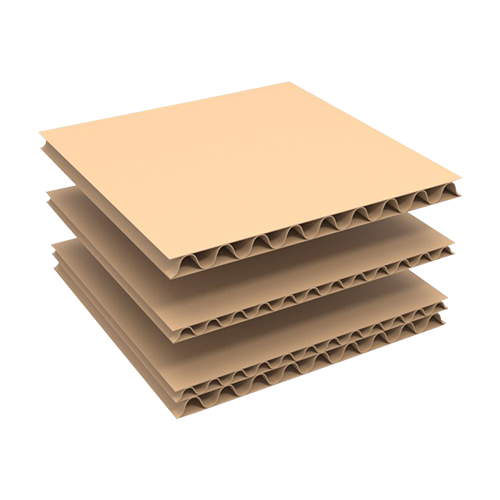
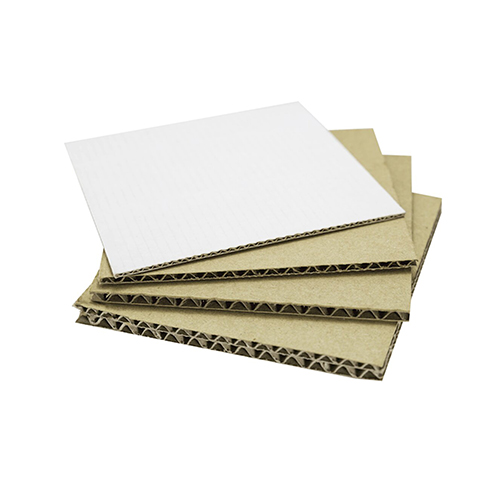
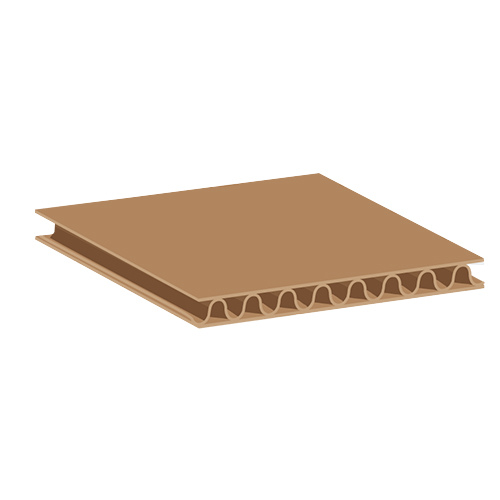
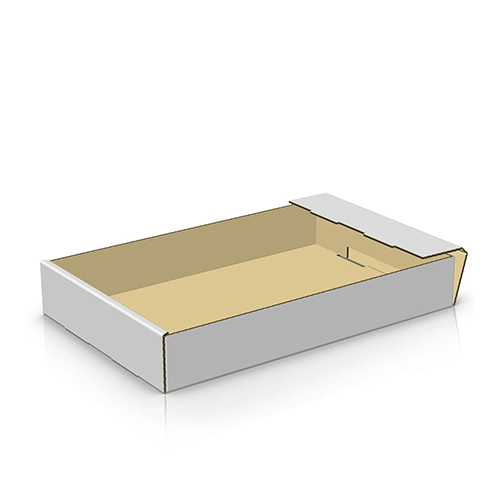
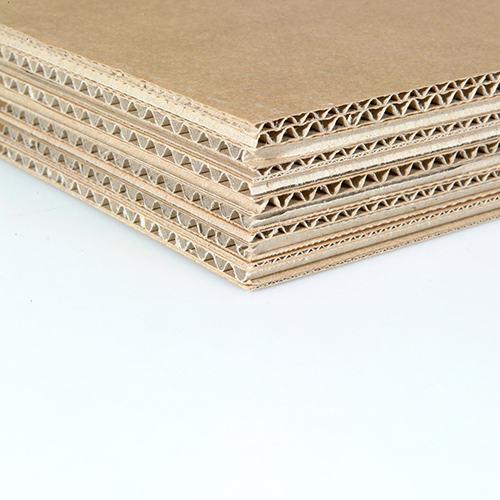
Corrugated is also known as pleated paper. It was invented in England in 1856 and used as a liner for tall hats, but corrugated boxboard was not introduced and used as a shipping material until 20 December 1871. The patent was issued to Albert Jones of New York City for a single-sided corrugated board.
Corrugated cardboard material is available today in our daily lives. However, we see it on the market in fruit boxes, in packages that bring parts or raw materials to industry, in courier delivery trucks, etc. Although the importance of this material makes us think that it has existed all our lives, the truth is that it was not invented until the middle of the 19th century, and its first use is far from what we know today.
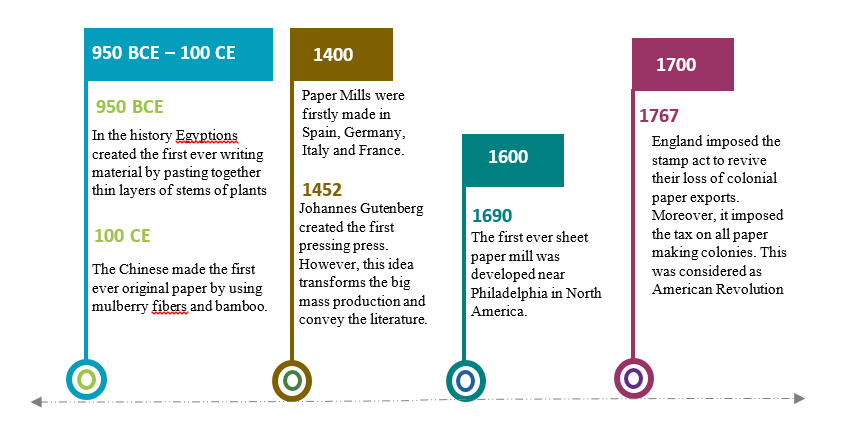
Do you know? The first corrugated boxes were manufactured in the United States in 1894 by Henry Norris and Robert Thompson. Then a year later, they were sold to Wells Fargo for shipping purposes. Not only were these cardboard boxes cheaper and lighter than traditional wooden boxes, but they were also easier to store.
But finally, corrugated material packaging experience and their use proved that corrugated
boxes were ideal packaging due to their characteristics of lightness, versatility, low costs, and resistance.
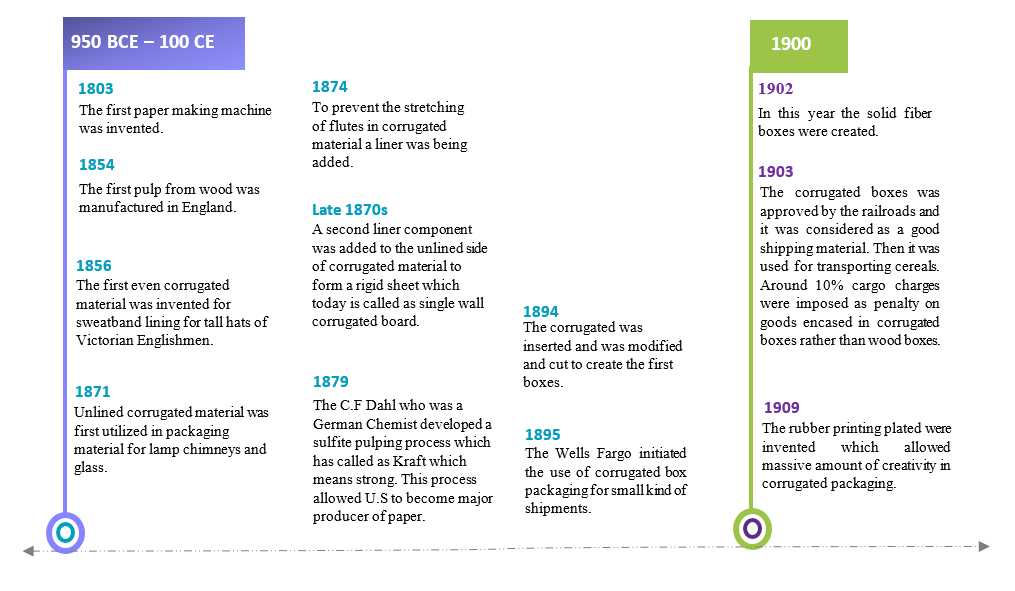
The basic structure of the corrugated box is very simple. The corrugated box consists of a fluted sheet glued to one or more liners. In its structure, a corrugated medium sheet is used, which is sandwiched between two liners. The structural characteristics of the corrugated board are governed by four variables:
(1) The Strength of The Liners
(2) The Strength of The Corrugated Medium
(3) The Height and Number of Flutes Per Foot
(4) The Number of Walls (Single, Double, Or Triple).
Nowadays, there are modern techniques used in the formation of the corrugated box. At the production starch in powder form is produced in a Fully Automatic Glue Kitchen, where it is combined with the water and other chemicals and then transferred to the corrugator. The glue is then nicely laid out on the corrugated medium as the fluted paper and attached to the two layers of the linear board.
Further, these boards are cut and folded according to the need and choice of the clients and left to cool down for around two to three hours before moving on to the printing and finishing phase.
However, dyes that have been mixed and processed, again according to the needs of the clients, are fed into flexo printing machines to print pre-designed logos, product information, and other visual elements found on the boxes. Thus, at this last stage, before they are transported to clients, they are folded and either glued or stitched together to be ready for use.
Do you know? This all process is carried out largely by computer-aided (CAD) technologies, as well as with the help of a highly-trained team of designers, technical sales experts, and research and development personnel who sit together to develop the product with the aid of a fully equipped laboratory.
There are many packaging companies out there who provide cost-effective, eco-friendly packaging solutions to their clients. There they are able to calculate the best sizes and strength grades for the needs of their clients, saving both money and energy.
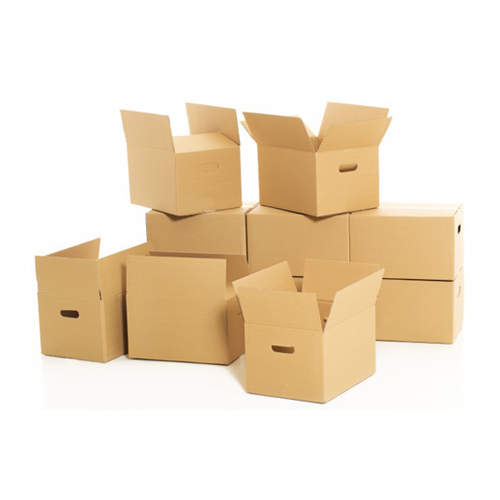
There are hundreds and thousands of the benefits of these corrugated boxes, and few of them are:
No doubt that these boxes are great to go with as they offer guaranteed protection to the shipped and displayed products.
Besides, most of the businesses are now more towards the addition of their personal touch to their product’s packaging. Therefore, the corrugated boxes are great in this case. Like, they are highly suitable for any business as these are very easy to design in any way and with an idea.
Sometimes, the buyers get a little confused after getting to know about the incredible properties of these corrugated boxes. Therefore, they start assuming the high rates, which is absolutely wrong. Yes! The corrugated boxes are very light on the pocket because of their unbelievable affordability.
Indeed, the best benefit of the corrugated boxes is that they are sustainable and eco-friendly. Yes! The use of these boxes leaves no harm to our beloved nature. Also, you can reuse it many times, which means a great way to reduce the cost.
The corrugated boxes are great in many ways, such as you can customize them for your company’s branding and brand awareness. Indeed, branding is a great way to impress the customers as it looks more professional to the customers.
Besides, these boxes are very light in weight so that along with the product weight, it will make the shipment safe and sound. Also, the lightweight corrugated boxes reduce the shipment and extra handling costs.
There are different styles of corrugated boxes that you can use for different products. Besides, the reason behind the invention of these styles is to provide the proper fitting to the specific product. Like, these styles are specially designed by keeping different products in sight. Moreover, you can make a selection between the following styles:
This is the most common style among all the corrugated box styles. Moreover, it has two outer flaps and two inner flaps at the top. Additionally, it also has two outer flaps at the bottom.
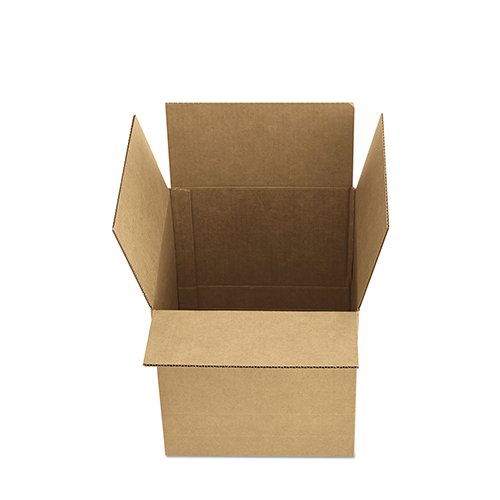
This style of the corrugated box is the same as the regular slotted container. The only thing which makes it different from the regular slotted container is that it does not have the top flaps.
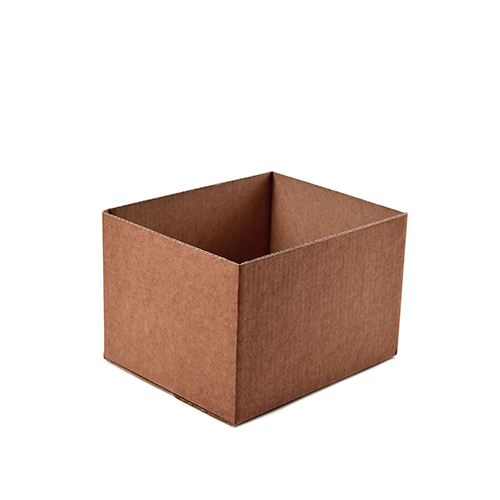
In the overlap slotted container, the outer flaps of the top and bottom overlap each other by at least one-inch minimum while folding.
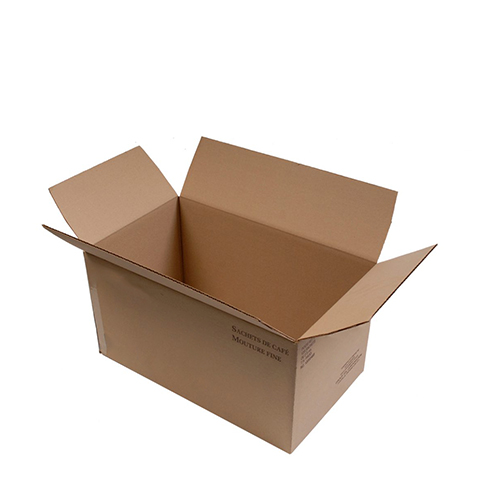
These boxes have specially die-cut bottom flaps that lock together you assemble the box. Additionally, snap-lock styled corrugated boxes come with either top tuck closure or RSC- style top flaps.
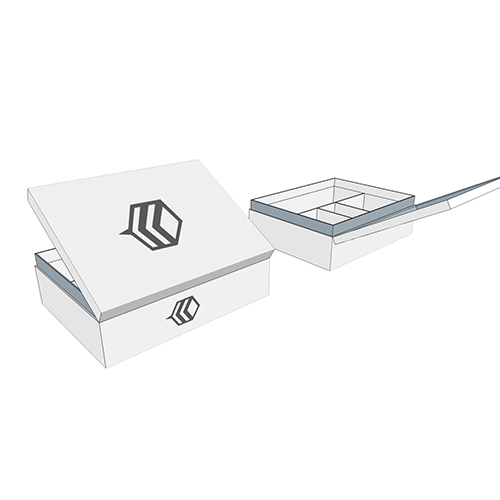
The telescopic styled corrugated boxes have two parts. Moreover, the opening of these boxes is something like this that the top part slides over the sides of the bottom part.
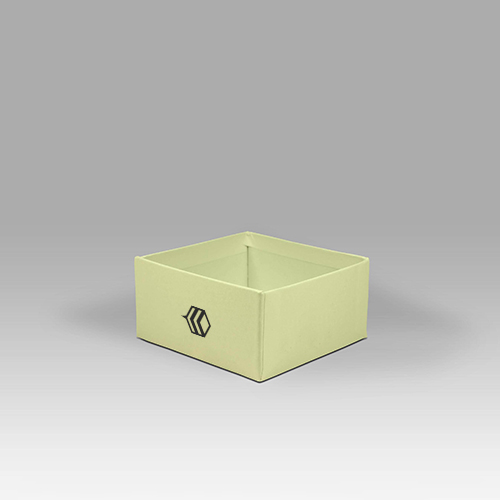
Indeed, the use of corrugated boxes is very common in every industry because of its exceptional properties. Moreover, their versatility makes them likable by every business. Besides, the use of these boxes is common in the following industries:
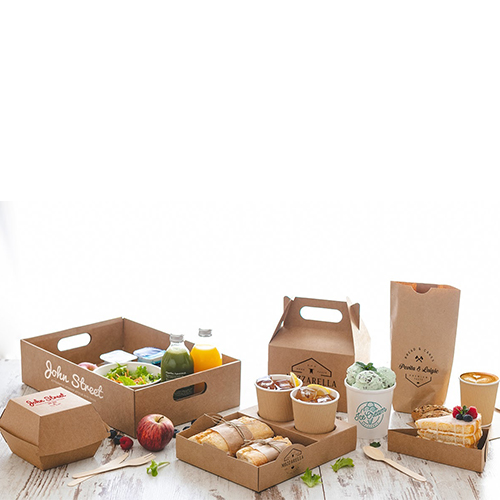
According to the research of different well-reputed universities, the corrugated boxes are great to prevent the food from bacterial infections and for the safety of the beverages. Also, as per the sayings of the experts, the corrugated boxes keep the fruits and vegetables fresh for a longer time.
Not only these boxes keep the food fresh and healthy, but also the fibers of the corrugated material prevent the food from the attack of bacteria. Besides, you can use these corrugated boxes for the:
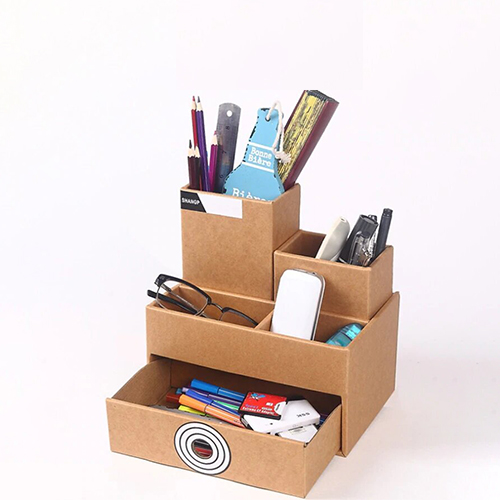
Besides, the corrugated boxes are perfect for the shipment of the stationery. Like, you can keep any type of stationary from hard pencils to soft erasers by trusting these boxes. Moreover, the safety of any type of stationery is definite in these boxes. you can use the corrugated boxes for the:
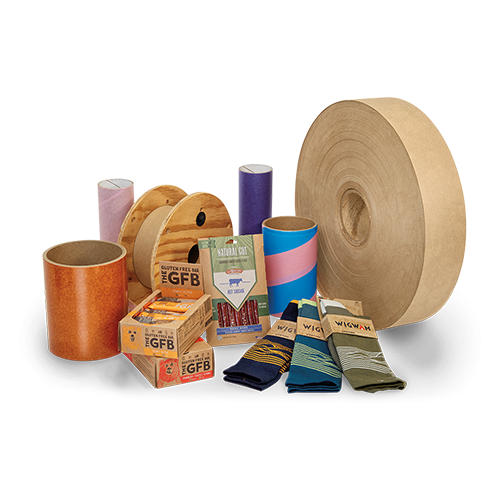
The corrugated boxes are non-less than the best thing that ever happened to the different industries just because of its incredible advantages. Moreover, nothing can be great and trustworthy than these boxes for the transportation of industrial products. All you have to do is to put your hands on the corrugated boxes which are easily available in the market and pack your products in it. You can go with these boxes for the products of the following industries:
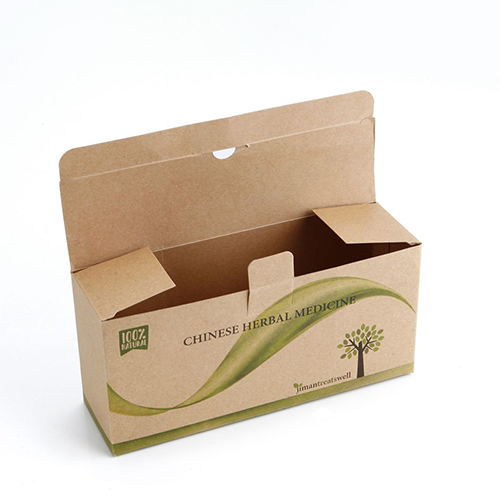
Medicines need such packaging that keeps them safe from direct sunlight and humid. For this purpose, nothing can work perfectly than the corrugated boxes.
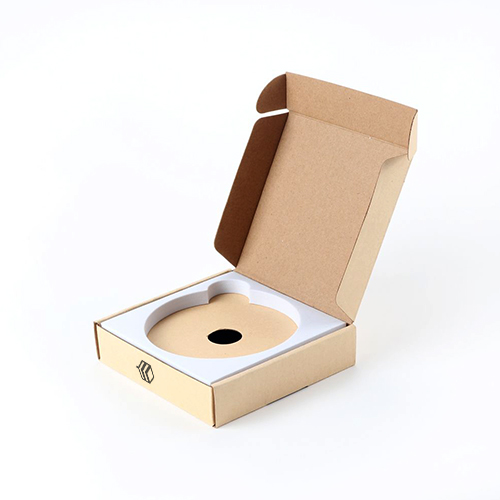
Custom Corrugated boxes are easily available in any size and shape for the easy transporting and display of the apparel.
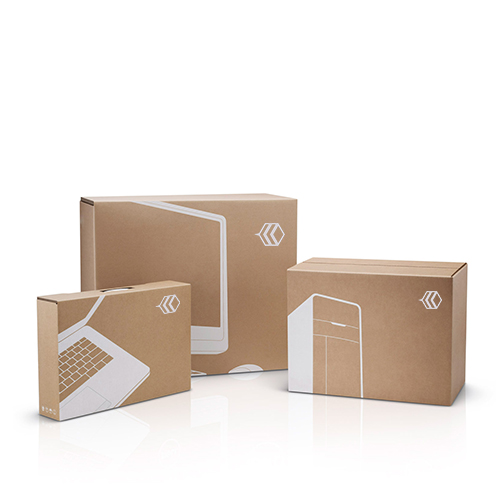
We all are quite known to this fact that the electronics are such products that need to be packed properly into a packaging. Moreover, they need such packaging, which keeps them safe and sound during import and export. Indeed, nothing can go perfect than the corrugated boxes for the safety of the electronics. Indeed, almost all the electronic brands trust these boxes blindly.
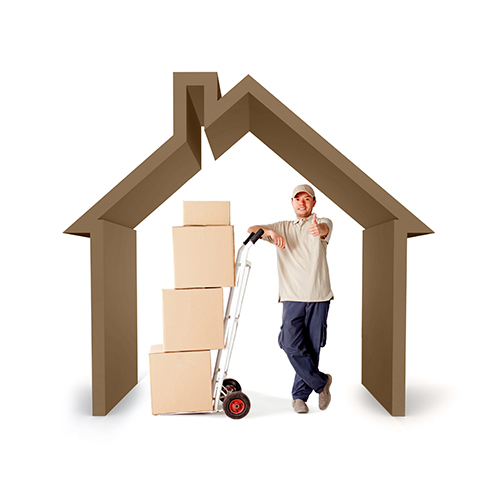
If you are moving from one place to another and very tensed about the safe and sound transfer of your goods, then what can be best than the corrugated boxes. Indeed, these boxes will provide the proper grip and security to your goods during the transfer.
The design of a corrugated box is a major undertaking. The process of selecting the correct package design for a particular product has grown more complex as new technologies and materials present ever-increasing manufacturing options.
The ways in which the corrugated board may be used are practically limitless. Certain basic container styles and designs are suitable for packaging a wide range of products. There are some corrugated interior devices platforms, padding, or inserts and plastics, molded polystyrene foam, used to provide reinforcement, bracing, and shock absorption.
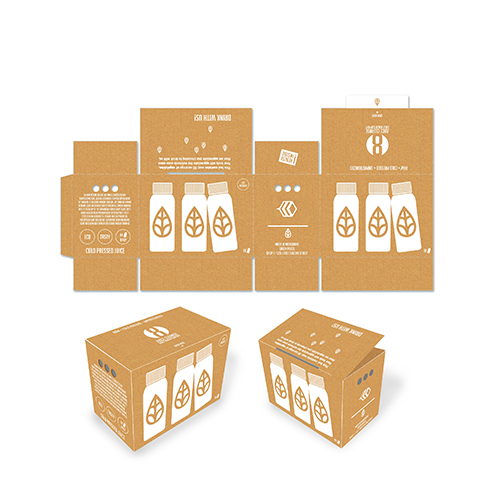
Specialty corrugated containers are tailored to the requirements of a particular product. Those requirements may involve everything from the “ship-ability” of the product itself to how the container is filled, stored, loaded, stacked, braced, chopped, and unpacked. Specialty or custom-made boxes are usually required for special products in large quantities.
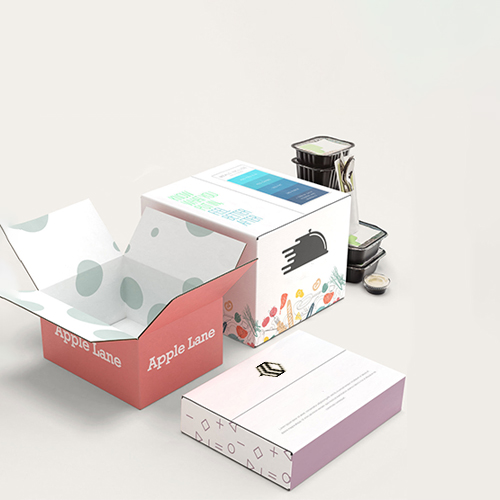
In addition, all corrugated materials and cartons must be certified by the manufacturer. Weight, paper content, and puncture and bursting test certificates must be displayed on all corrugated boxes. A significant trend in corrugated technology is impregnating and coating corrugated board with waxes and plastics. The moisture-resistant coating permits reuse of the carton and shipment of products, such as produce, that were previously shipped in expensive wooded crates and barrels.
|
Types |
Uses |
Characteristics |
| Flat or dull finish, coated and uncoated | Box wraps for gifts, cosmetics, jewelry. | Smooth, excellent printing surface. Good for embossing. |
| Glossy finish, supercalendered | Labels, displays, box coverings. | For quality printing. Embosses well. |
| Cast coated | Box wraps, gift wraps, labels. | Smooth, high gloss. Brilliant white and colors. Excellent printability. Scuff resistant. |
| Flint | Box and gift wraps, labels for cosmetics, gifts. | Extremely fine-quality surface, high gloss. Wide color range. |
| Friction glaze | Box covering. Good appearance at a low cost. | High glaze. Scuff resistant. Economical. |
| Metallic-finish Argentine | Box wraps and overwraps, luxury items. Gift packages. | Has the decorative effect of foil but is less costly. Lacquer lends a gold or colored look. |
| Foil | Decorative packaging and labels. | Aluminum laminated to the paper backing. Wide range of brilliant metallic colors. Expensive. |
| Gravure printed | Boxes, displays, labels, platforms. | Printed with metallic powders mixed with lacquer. |
| Half-fine, half-fine embossed | Specialty boxes for cosmetics. | Embossed, continuous metallic surface. Wide color range. Elegant, rich. |
| Pyroxylin | Box coverings, food wrappers for high-quality items. | Metallic tones. Bronze, aluminum, or copper ground into pyroxylin lacquer. |
| Vacuum metalized | Labels for canned goods, batteries, wrappers for food, and confectionery products. | Produced by vacuum metal-vapor deposit method. |
| Flock | Platform coverings, linings for gift boxes. | A flock of cotton adhered to the surface of the paper to create a soft, velvety look. |
| Foam paper | Protective cushioning for wraps, platforms, pads, box coverings. | Foamed polystyrene sheet laminated to paper. Lustrous finish; wide range of colors. |
| Glitter | Box coverings, platforms. | Specks of metal embedded in the paper surface. |
| Iridescent or pearlescent coating | Luxury items, wraps, platforms. | Mother-of-pearl effect. |
| Tissue | Used for jewelry, flowers, fruit, hosiery. Specially treated and designed for visual appeal. | Treated for texture, water, resistance, printability. |
| Glassine | Laminated trays for candies and other food products. | Grease and oil resistant. |
Direct printing on the corrugated material box is highly absorbable. It is usually limited to the use of line art. Do you know? Direct printing is the least expensive type of printing usable on corrugated board. Moreover, the letterpress and, more recently, flexography are the typical printing methods.
A term known as a preprint is used to refer to the process in which a roll of the printed stock is used as the top liner in creating a corrugated sheet. Flexography and rotogravure are the printing methods used in most preprint processes. The set-up costs for preprinting are high. It is difficult to print full color on the most corrugated board, with the exception of E-flute. Due to its versatility, flexographic printing has become one of the most commonly utilized.
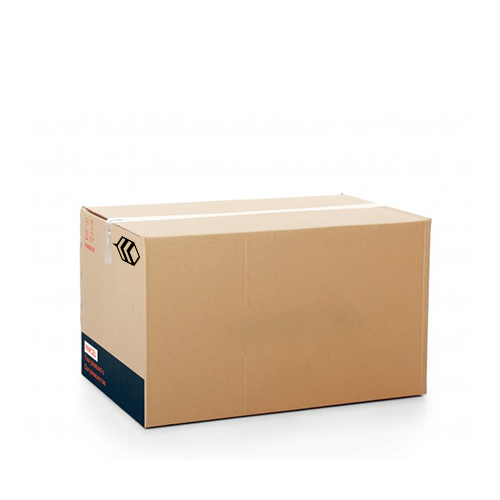
Corrugated material boxes and printing have come a long way in recent modern years. Despite having durable consistency of corrugated box during shipping, the corrugated substrates are spongy and can be easily crushed during an indelicate printing process. So, in conclusion, businesses once had to settle for product shipping and display boxes printed with dull, low-resolution images and text that were less appealing to consumers.
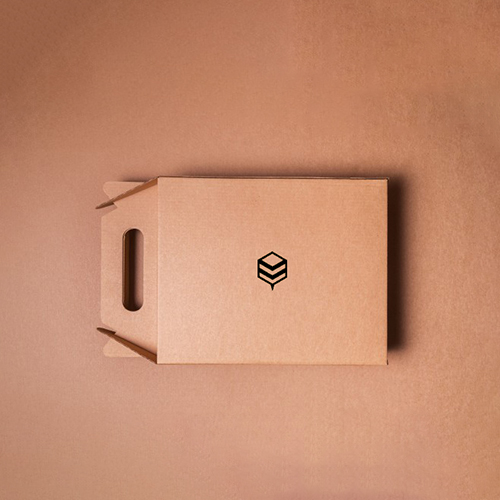
Today’s new technologies and materials have amazingly transformed corrugated box packaging printing. However, with these advanced technologies and the ever-increasing capabilities of flexo, brands can simultaneously use corrugated product boxes to increase product visibility and encourage a brand’s awareness. This includes the material’s combination of lightness and durability, which is ideal for shipping.
The variety of available processes and materials have made several methods for printing on corrugated material. Types of printing on corrugated boxes include:
Further, the labels are often prepared to cover the boxes on one or more of their sides: full-sized labels cover the top and all four sides of a box; partial labels may be used only on the top of a box or on one or two of its sections.
There are innumerable variations of label application, including lamination onto the corrugated box, depending on size, shape, and cost considerations. Litho labeling refers to the lithographic printing of a sheet of paper that is then adhered to laminated to corrugated board. Labels can be full or partial. Litho labeling and laminations are used on large boxes for toys, games, housewares, and sporting goods.
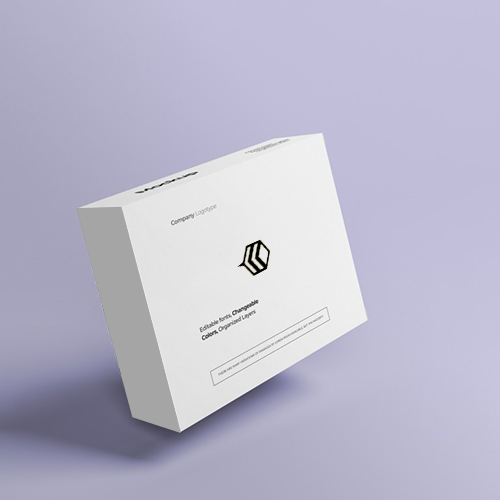
What Are the Benefits of Corrugated Box with Dividers?
The dividers in corrugated boxes are made from corrugated material. These partitions provide stronger protection of the interior products. Moreover, the corrugated partitions also help in providing more stability to the product during transportation. In corrugated boxes with inserts, you can encase multiple products at the same time, and these dividers are very helpful for keeping the product in its original position.
How Can Corrugated Box Keep Your Products Breakage-Free?
The flutes present in the corrugated box increases the durability of the packaging. It protects the contents from the vibration of conveyor belts and trucks, which can loosen screws, cause soft material to rub into dust, and other wear and tear compression on all sides, from indiscriminate stacking.
Is Corrugated the Best Material for Boxes?
Yes! The Corrugated is lighter and less expensive than alternative materials like plastic, wood, and Meta plus. The corrugated boxes are 100% recyclable. Rather than other types of boxes, corrugated boxes fold flat for storing and shipping, saving you money and floor space. Moreover, the corrugated boxes are strong enough to stack, protect your products, and provide resistance to impact and vibration during shipping.
It is luxurious. It is classic. And it has a subtle crosshatch-textured, embossed finish that you have always wished for your stationery and other high-end paper products. Depending upon the manufacturer, you will get a wide variety of linen paper.
It usually comes with a matte finish, and it resembles woven linen fabric. It has received positive feedback in recent years from the customers due to the strength that it offers. The secret of its strength lies in its crosshatch texture. Apart from the strength, this texture also offers limited flexibility.
Once you start looking for premium and luxury options to print on, linen-textured paper is the first choice. Being used in a variety of industries, linen paper stock does not have a substitute for it. Due to its Uber look and the sleek finishing it has at its disposal, it can be easily named a paper stock without competition.
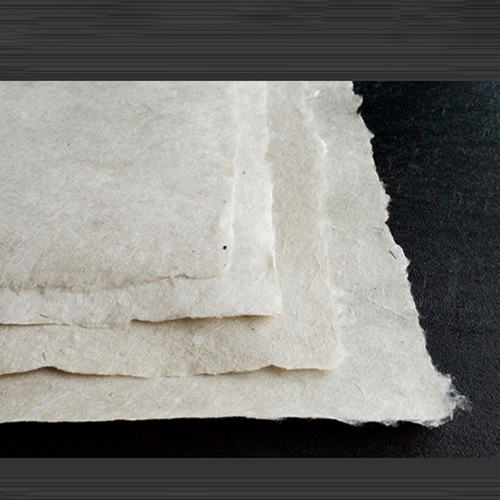
But what you get in ready-made linen stock paper was not always like this. It has come through centuries of the industrial revolution, and it can be expected that the linen stock after a few decades will be very different from what we have today. To understand the dynamics of linen fiber and how linen paper stock came into place, we have to know the history of linen, which goes as far as 8,000 BC.
Here is the brief history of linen stock, which explains the phases that it went through in its evolution, how linen paper stock came into existence from linen fabric, and what is ahead of us regarding luxury printing paper options.
In the textiles, linen is one of the most ancient textiles, and its traces were found in a swiss lake that dates back to 8,000 BC. Because of the lower elasticity of linen fiber, they do not stretch. It is why very ancient remains of linen have been found since the material never decayed.
Dyed flax fiber, which can be named as the primary stage of linen fiber, was found in a cave in Georgia, and it dates back to 34,000 years. Such old remains of the linen prove everything but that it is a product of modern industrialism.
Tribes back then had all the knowledge and skills that were required to make the linen fiber. The first written evidence of linen comes from the Linear B tablets of Pylos, Greece, where linen fabric has its ideogram and is also written as “li-no” in Greek.
The Phoenicians, who had their merchant fleet, brought flax into Ireland. Belfast became, in time, the most famous linen producing center in history. The historical importance of linen can also be derived from the Jewish religious transcripts, which forbid them to wear a mixture of wool and linen.
Since then, linen fiber has gone through many industrial changes. In the last decade, the linen paper stock has been produced extensively to be used as a premium and luxury paper. Many modern techniques used in the production and consumption of linen have given an entirely new dimension to linen, which we will discuss here.
Linen yarn is spun from the long fibers found just behind the bark in the flax plant (Linum usitatissimum). To retrieve the plant’s fibers, the woody stem and the inner pith (called pectin), which holds the fibers together in a clump, must be rotted away.
The cellulose fiber from the stem is spinnable, and linen thread is made of it and cordage and twine. From linen thread or yarn, fine toweling and dress fabrics are woven. Linen fabric has always been a popular choice for summer clothing.
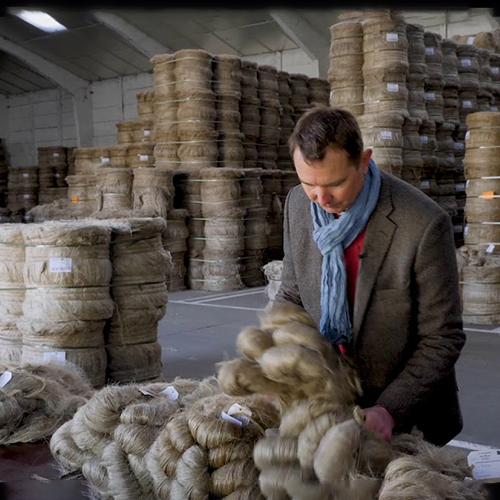
It feels cool in the summer but appears crisp and fresh in the hottest of weather. Household linens made of pure linen become softer to the touch with use; thus, linen is also the bedsheet of choice.
While the flax plant is not difficult to grow, it thrives best in humid and cool climates and within moist, well-plowed soil. The other fiber extraction process is laborious and painstaking and must be done in an area where labor is relatively inexpensive and plentiful.
It is remarkable that while there are some modern techniques in fiber preparation, a lot of fiber preparation is still done by hand, and it has been so for centuries. This may be due to the care that should be taken with handling the fragile flax fibers inside the woody stalk, which could be adversely affected otherwise.
The linen stock paper is eco-friendly and answers all the questions about the increasing environmental crisis problems. Both natural white and brilliant white linen paper is made up of at least 30% post-consumer waste. So, if you run a business and have a green plan, linen paper is your best bet.
Similarly, linen paper can help you differentiate and stand out from the rest. Brilliant white and natural white linen paper are both textured, which offer a premium look to the linen paper, and amazing personalization and customization option on top of it.
Brilliant white linen paper is excellent all-purpose stationery, and it works well with many multi-colored designs. Natural white has a light creamy appearance that makes your stationery seem more sophisticated.
It is also best-suited to solid-colored designs for stationery and other printing options. When your stationery looks crisp and professional, and your colors pop off the paper, your brand gains credibility.
Furthermore, linen stock paper is very affordable, since its production and processes are not costly. It is why, if you are looking for cheap stationery and printing paper options, linen stock paper should be your first choice. The recent momentum that line stock paper has gained can be credited to the amazingly lower prices of it, on top of the quality and strength.
Linen is an elegant stock that helps produce elegant and luxury packaging solutions for a considerable industry portion. Seeing to the diversified needs of the market, the industry uses two different linen stocks for packaging production. Both types consider elegance at an elevated scale in different settings and scenarios.
Linen fiber comes from the flax plant. It usually is a rough texture with a crosshatch pattern. It is, typically, a paper with a linen finish. The linen stock is quite a trend in the markets for its properties and end texture. For the production of linen paper, the flax fibers are used just like any other paper production.

The resulting paper is much crispier and stronger in comparison to regular paper. Besides that, the water-absorbing qualities of linen paper make it very practical for an array of uses. Regular linen paper stock comes in 75 gsm, 80 gsm, 84 gsm, and 90 gsm with both surfaces uncoated.
This paper is quite practical to write on as both sides are uncoated and have a matte styled texture. This paper comes in a wide range of shades to make them more suitable for various purposes. Moreover, reprinting linen paper stock is also quite possible without the loss the quality.
Linen card stock is much like linen paper but with more strength. The linen cardstock is produced like any other card stock but from flax plant fibers. Using flax plant fibers lends linen, cardstock its rough and embossed texture.
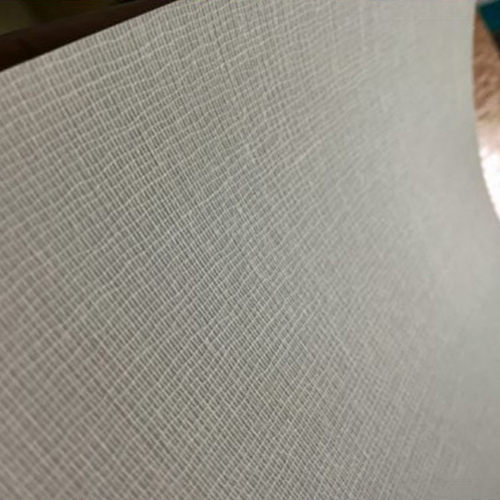
This cardstock is quite rigid and strong, which makes it quite usable in the packaging industry. Classy and sophisticated linen cardstock is mostly preferred for stationery products, letterheads, and invitational and presentation cards. Normally, the linen cardstock is produced in 246 gsm, which makes this cardstock quite heavier.
This elegant material is mostly preferred for more luxurious and elegant packaging needs the industry finds. Like linen paper, linen cardstock also comes in different colors and shades. The outstanding appearance and feel of the coated, as well as uncoated linen cardstock, make it very popular in various industries.
Linen paper and linen cardstock are two quite elegant and in-demand materials for luxury product packaging. Industry always keeps finding various purposes that ask for unique texture and strength this particular stock provides.
The most common application of these materials is found in the stationery industry. From book covers to pages, linen paper is a very sound choice when the demand is luxury and style beyond fathomable imagination. Besides that, the wide use of linen paperboard is also found in certificate printing, portfolios, and Curriculum vitae printing.
On the other hand, the linen card stock is preferred for products which are in the form of cards. The industry prefers linen cardstock when the clients demand extravagant style from visiting and business cards to invitational and greetings cards.
Artists and painters often use linen paper canvas with a rough surface to print on as this material offers outstanding writing and painting properties. It is found the best suiting material for the retail packaging of various high-end products now and then.
| Paper (Linen) | Cardstock (Linen) | |
| Grade/Points | 75, 80, 94, 90 | 246 |
| Strength | Moderate strength | Higher Strength |
| Preferred Industry Use | Stationery Products | Card Printing |
| Printability | Good Print Quality | Elegant Print Quality |
Linen paper and linen cardstock both are quite a user friendly when working with. Linen paper formation is quite similar to any other paperboard formation. When designing linen paper or linen cardstock, results usually depend on the linen paper’s process and style.
Linen paper and linen cardstock both come in a wide array of shades that make it very practical for new designs. Being in the native shade means that the linen paper stock will be of the same color inside out. It is not recommended to print the entire linen paper. Instead, using colored linen paper to write on it with little printing produces promising results. Minimal printing with a colored linen paper makes it shine even brighter.
Linen paper and linen cardstock are famous for its rough texture and crosshatched pattern. This is why, usually, linen paper and linen cardstock are in uncoated form. However, it is equally possible to get either one or both sides of the linen paper stock coated. The coating makes the surface of the linen paper a lot smoother.
The choice lies with the clients as both offer outstanding results in their category. For product packaging, die-cutting is the way forward towards reliable linen packaging solutions. However, considering the addition to cost and weight for products can make it more strategic to use linen packaging with premium products like flagship mobile phone packaging or a premium lipstick packaging.
When it comes to printing, the industry uses various strategies to ensure the most promising results. Most commonly, it is the paper type that defines a perfect printing technique for that paper. For linen paper and linen cardstock, there are several ways to ensure promising results from printing.

Typically, the linen paper is ideal for writing with a pen as it does not readily absorb the inks. For printing, the two most common techniques include digital printing and offset printing.
Digital printing is a very promising printing technique for linen paper and linen cardstock. For toner-based digital printing, point charge helps the toner stick and fuse into the liner paper stocks instead of dies and presses for liquid ink.
In toner-based digital printing, the lasers first print an image on the drum on which toner is attached using charges. In turn, that toner is transferred to the linen paper or linen cardboard using another charge. This type of printing offers a mottled look to the printed linen paper and linen cardstock.
As the linen paper or cardstock does not readily absorb liquids, printing with liquid inks can be practical as well as challenging. To make the ink fuse better in fibers, printing presses press ink dots into the linen paper and cardstock.
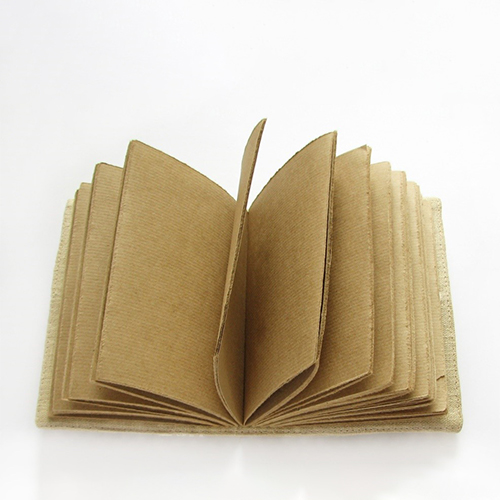
Unlike toner-based digital printing, this technique requires pressing the inks to get an effective outcome. This printing technique does not offer as encouraging results as are possible with toner-based digital printing.
Preferring toner-based digital printing is very practical for the linen paper stocks. The industry mostly prefers toner-based digital printing for more reliable outcomes for mass production of printed linen paper or cardstock.
Why should I prefer linen paper over ordinary paper?
Linen stock paper offers an additional advantage of being extremely sustainable and is completely recyclable. If you are a company committed to a green future, linen paper should be your first choice.
Is linen paper water-resistant?
Yes, it is water-resistant, but only up to some extent. It is advised to keep it away from the humid and wet environment.
Can linen paper be used for making packaging boxes?
Linen cardstock is used for packaging boxes, which is an expensive option when it comes to packaging. It is suggested to use packaging boxes made from other materials unless you want your boxes to be supremely premium and can afford the cost.
Cardstock is manufactured and used worldwide. Moreover, the production of this material has doubled in just three decades. Furthermore, a very significant change has been noted in the last decade. Many new mills with fast machines have created thus heavy investment has poured in it. Cardstock is basically a heavyweight paper.
It is also called cover stock and pasteboard. This material is thicker and more durable than ordinary copy paper. It is mostly in use for business cards, scrapbooking, catalog covers, wedding invitations, educational certificates, or anything that require more durability. Due to its thickness higher than ordinary paper, it can hold different forms of liquids and embellishments.
The best part is that it comes in multiple colors, textures, sizes, weight, and design. Apart from that, this material usually has a smooth surface. However, you can get a metallic or glossy version as well for decoration purposes. Besides, cardstock has different forms. For instance cotton cardstock, linen cardstock, parchment, and many others.
Everything about this material is discussed below in detail. Moreover, the selection of accurate thickness is essential to ensure the ultimate protection. This material comes in different thickness levels. In the US the thickness comes in pounds. Whereas in Europe, cardstock comes in grams per square meter. The choice depends on your budget, what you prefer, and the overall appearance you want for the box.
Paper fulfills different needs in life. From wrapping a gift to enormous ways of paper crafting, it is easy to get lost in its different types. Cardstock is basically a thicker and more durable form of paper. However, its roots are connected deep down to the normal writing and printing paper.
Papyrus was the earliest form of paper that goes back to 5000 years ago. It was not exactly a paper, but a sheet of papyrus stem grew on the bank of Nile river Egypt which by soften in water and then interwoven to achieve the form of a mat. However, a man in china named T’sai Lun came up with the concept of paper and is called a father of the papermaking process.
He came up with the concept of making paper for the first time by mixing barks of mulberry trees with bamboo fiber and water. He then spread the mixture bristly surface to let it dry. This method of paper manufacturing spread from china to Tibet and Vietnam, make its way all towards Korea and Japan in the 6th century AD. It came across Central Asia and Persia and later introduced in India by trade. The modern papermaking techniques came into existence after its arrival in Europe.
Cardstock is a thicker form of simple paper. If you increase the weight of paper, it becomes cardstock. For instance, a paper with a range of 100gsm and above is cardstock and below the given figure is a paper form. Its formation is not much different from paper. Like paper, fiber from paper pulp or pure cellulose is in use for the manufacturing of cardstock. Moreover, it sometimes is made of 100% pure and specific kind of paper like pure hemp. Apart from that in cardstock, additional fiber types are used during the manufacturing process to give it specific and interesting patterns and texture like mulberry fiber, flower petals, seeds, and glitters.
Moreover, a mixture of hardwood, softwood fibers, and fillers are in use to guarantee its strength. In formation, hardwood is responsible for the proper development of paper and softwood gives strength. At the same time, fillers are responsible for the overall appearance of the cardstock. However, the blend of fibers is responsible for the quality of cardstock. Furthermore, acid-free cardstock paper stays for a longer period of time. It is made at a neuter pH level that is pH 7.0 or higher. Material manufactured at such level contains less quantity of acid, so the material does not turn yellow over time.
Trees are a source of fiber that is an important ingredient for the formation of cardstock. The fiber is transformed into pulp. These fibers and fillers are water, so how does it convert into a form of cardstock? It goes through a machine-made manufacturing process. The fiber pulp is dispersed into a papermaking machine that flattens the pulp and removes the water.
There are two ways of making paper. By chemical pulp. When it comes to a chemical pulp, stripped trees from their bark are transformed into chips that then goes through a process of boiling at a strong chemical solution. In this way, anything that is not cellulose eliminates. Contrary to it, mechanical pulp the process of elimination does not take place in the mechanical pulp. It involves an entire tree and weakens the quality of cardstock.
After the formation of pulp, it goes through other steps like bleaching and mechanical beating. After that comes the turn of sizing of the paper and dyes to give it a tint. At this point, the counterbalance of remaining avid also takes place to make acid-free material.
During this whole process, the pulp is still 99% water. To remove the water pump is placed on the screens that contain suctions below which pulls the water meanwhile the drums press it from above. During this process, the cylinders are covered with wire mesh if you want to insert some patterns or parallel lines.
The application of watermark also happens at this moment by attaching the design to the drums cylinder. After that, heated rollers dry the paper. When the paper is completely dry the process of calendaring takes place that makes it’s surface even smoother. The matte, gloss, and other finishes are given at this stage.
All those who love cardstock but do not know how beneficial it can be for you are the benefits of using cardstock.
This material creates an impression that lasts for a long time. The boxes, envelopes, cards, and packaging made from cardstock last longer than ordinary paper. Due to its extent and the smoother surface, it is a good option for manufacturing initiation, greeting cards, and commercial cards.
You may not find something as versatile as cardstock. As it comes in a variety of colors, textures, and sizes, you have multiple options in front of you to choose from. This flexibility allows you to choose the best ones for your project. Additionally, you have a choice of choosing either a single sheet or diverse packs in which you get options like bright colors with a matte finish, pearl tones, etc. Get whatever suits your need.
It provides you with the ease of using your home printers. As the weight and thickness of this material are not so high, you can print on cardstock with standard printers. Laserjets and office printers are normally in the recommendation for printing on cardstock.
As it does not require updated printing machines, you can save money by using cardstock material. Moreover, buying cardstock material from the market is not expensive at all. Furthermore, if you are low on budget, you can make your own DIY cards and greeting cards to save money.
Cardstock material comes in a wide range of options. However, all of them vary from one another in terms of price, texture, material, and feel. Let’s have a look at the famous types of cardstocks.
Cotton cardstock gives a very modern and classical look to your packaging. It is a heavy cardstock material which is very suitable for letter printing. It is one of the most popular choices of material. However, it is relatively smooth when a person touches it. Plus, the texture of this material is highly inked resolving.
That is why it is suitable for all printing processes. You can use this type of cardstock for different invitations. You can keep this paper safe for a longer time even after printing images on it. However, you can also call this paper “photo safe”.
There is only one con of this material. It only comes in three different colors i.e., white, grey, and ivory. So, the choices of colors are quite limited. However, these colors are perfectly fine to give a classical look to any packaging box or invitation. The price of Cotton cardstock material is a bit costly than the other types of cardstock material. This is only because of the fibers used in it. Apart from this, it looks quite professional.
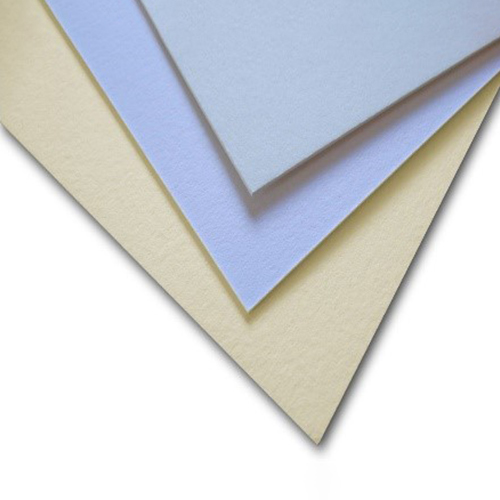
Well, this type of cardstock resembles the linen fabric available in the market. This type is having a delicate texture similar to the linen fabric. It has a matte finish. You can easily print the linen cardstock paper boxes at home printers. They are perfect to hide all the imperfections in the printing. If you the one who is done with the simple and ordinary looking materials, then he/she should definitely invest in this type to give a visual interest to the packaging. This material adds a touch of class, excellence, and sophistication to the material.
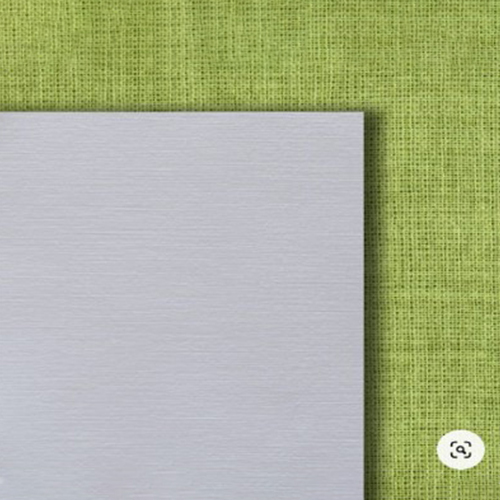
This type has a very fine and soft texture. The texture of this material resembles linen cardstock. However, it looks quite thin. Therefore, it is suitable for lighter packaging options.
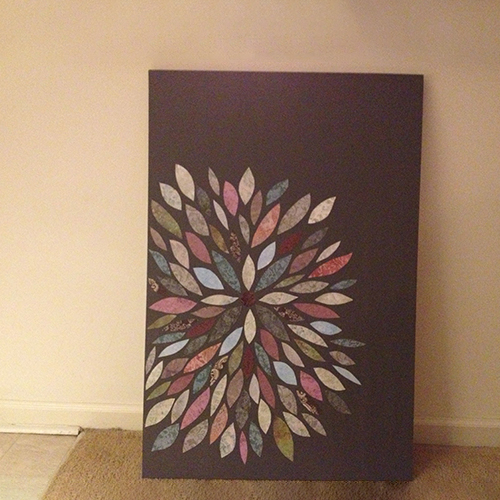
It has a smooth marble-like texture in it. You can say that it is much better than the above-mentioned types. A slightly marble look and semi-translucent paper make it more appealing for the consumers.
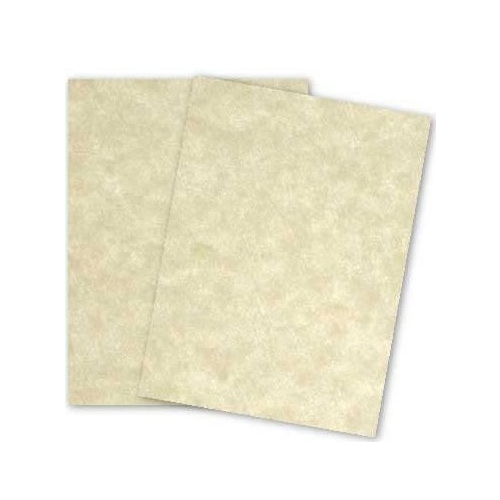
Well, Kraft is an unrefined form of cardstock. Wood grains are used in this material and it comes in different shades of brown and beige. However, you can use this type of cardstock material with the other material to add more colors to the paper.
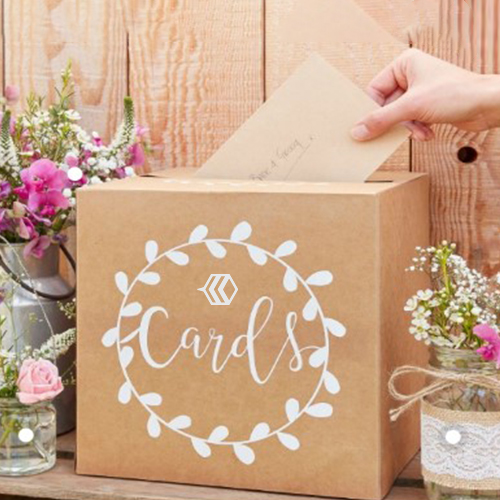
Printing is something very important for the success or failure of any business. For professional printing, you have to consult any known packaging company. However, not all types of cardstock paper can absorb printing. It is suggested to have the cardstock paper samples tested before the complete printing. However, there are different printing methods available for the printing of cardstock paper.
Inkjet printing is in use for high-quality digital printing. Tiny nozzles are used to spray the ink on the surface of the paper. In this way, the ink will absorb in a better way. Moreover, this also lessens the chances of smudging the ink on the surface of the paper. This type of printing is highly in demand and the most commonly used printing technique. Moreover, the ink used in this process is suitable for almost all types of papers. It is suitable for both Expensive and inexpensive consumer’s printing.
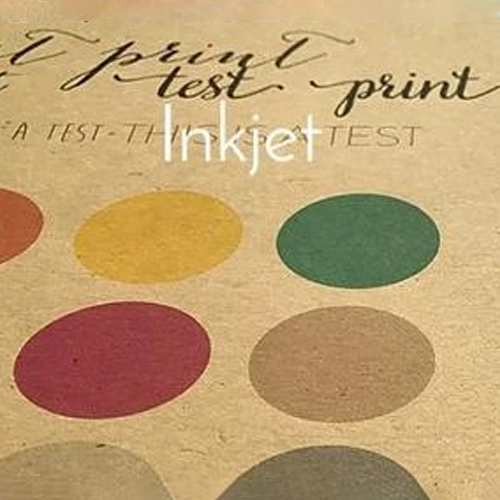
It is a high-quality printing process available for the graphics and text. Another name for this process is the electrostatic process. You can use laser printing even on those surfaces where inkjet printing doesn’t work. The laser printing process is different from the inkjet printing process. Laser ink does not soak into the paper.
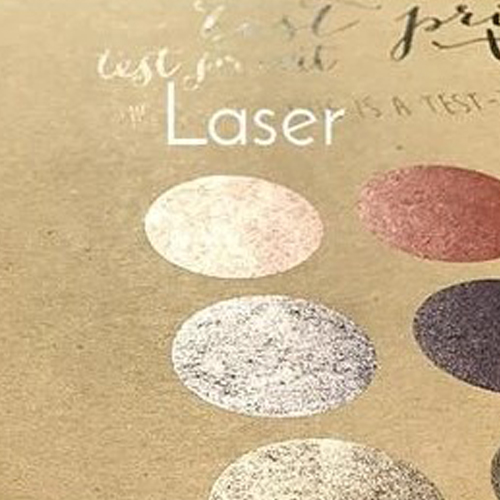
It is a technique of printing using a letterpress. You can use this printing process to print as many copies as you want. In this type linked metal plates are in use to print specific designs or text on paper. This is one of the oldest methods of printing and is suitable for printing papers. E.g. stamp papers.
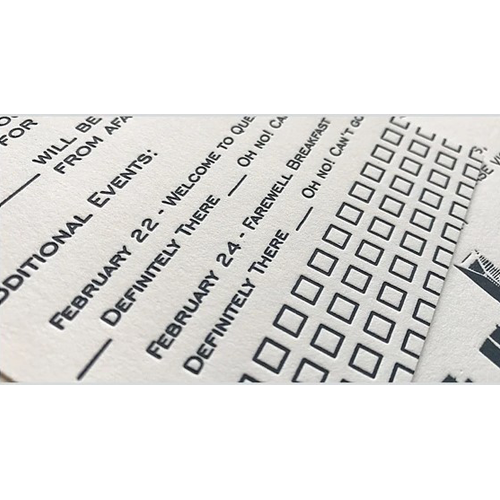
This printing type is also used for the cardstock and rely on the heat to create an image or text on the paper. To create a raised and embossed finishing powder ink and heat work together. It is mostly used to give a luxurious looking effect of paper or box.
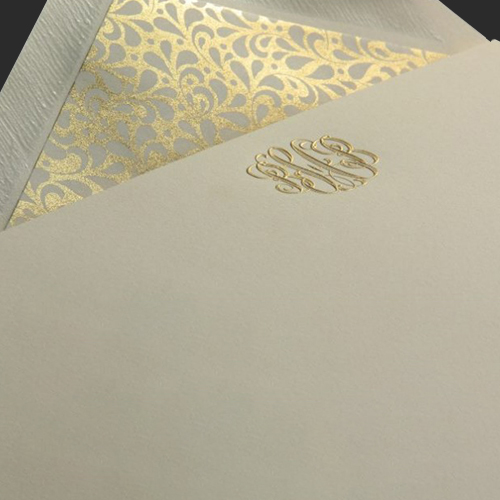
Offset, digital, flexography, silkscreen, and lithography.
However, cardstock is one of the commonly used packaging materials. You can find the use of this material in almost every industry. Every other business is dependant on the cardstock material for giving the extra lavish and alluring look to the products. The use of cardstock is common in the following industries:
The use of cardstock is quite common in this industry. Cosmetic and skincare products need sustainable packaging. We all know how much waste is produced even from the one packaging. Therefore, eco-friendly cardstock packaging is used to reduce the amount of plastic packaging.
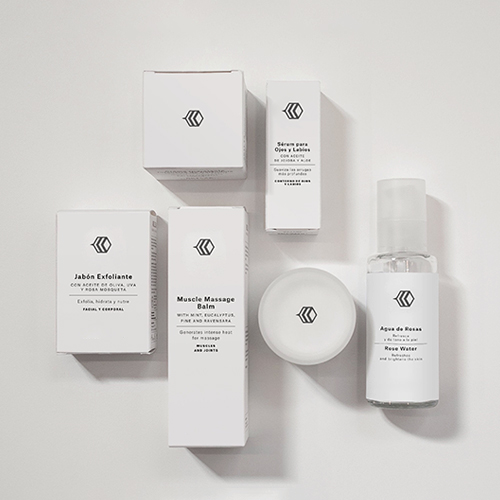
Manufacturers have become more creative with their packaging boxes. To cope up with the competitors one has to come up with something creative and trust-worthy. For maintaining the freshness of the food you have to use eco-friendly and reliable food boxes.
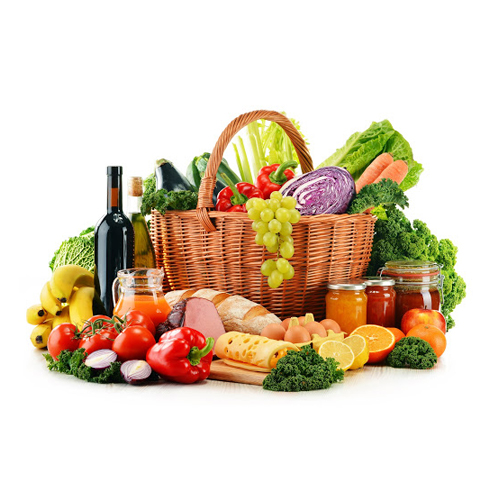
Well, guys, cardstock paper packaging can also be used for the packaging of light-weight electronic items like keyboards, mouse, headphones, etc.
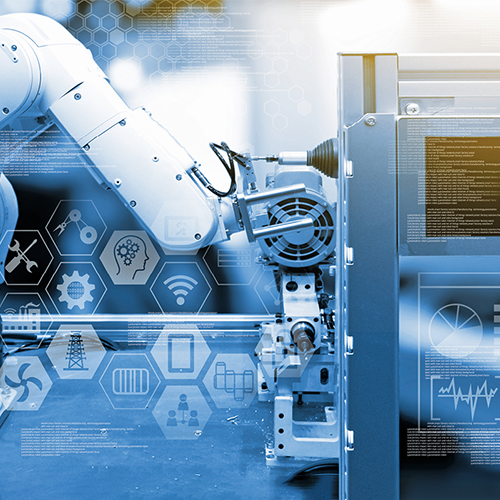
How can one forget about the most running industry? Yes, it is the textile industry. There are many known apparel brands working in the market and one must admit that each of them is so creative and stupendous regarding the designs of their packaging.
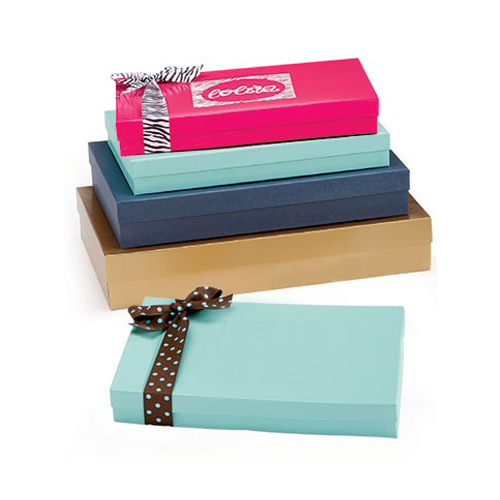
Once you have the cardstock paper then how will you design it? For sure, you have to contact any packaging company or their designer to design the cardstock paper or boxes. This is one of the versatile materials available for all industries. You can make envelopes, invitations, seasonal cards, resumes, and much more with this amazing material. As it is mentioned above that cardstock comes in different types. Have a look at the various options to style them. Believe me, this is so much fun. You can have various sizes of cardstocks as well, such as:
You can do many things for the betterment of this material. To design the cardstock you can use different coatings to give a very lustrous touch to the surface. This will make the appearance of a cardstock box very fancy and bewitching. If you want then you can add foiling, embossing, and debossing feature as well.
Is 14pt cardstock thicker than 16pt cardstock?
No, 16pt cardstock is thicker than 14pt cardstock. It also gives out a high-quality feel. The added thickness gives it more durability and longer-lasting effectiveness.
What is a good weight for cardstock?
The most common weight of cardstock is 80 lb. It is used for making cards, DIY invitations, postcards, craft projects, business cards, scrapbooking, and many other applications.
Can your cardstock with a printer?
Only OfficeJet and LaserJet printers support cardstock printing, however, others may not. If you know the nitty-gritty of paper and have all the information, you can utilize it to the best of your advantage.
Paperboard is a paper-based material with many similarities to paper. Even though there is no proper differentiation between paper and paperboard, paperboard usually has some superior characteristics like its rigidness and foldability. Typically, the paperboard thickness is over 0.30 mm or 12 pts. The paperboard production and use started from the early 1800s and saw a complete revolution formation and quality. Several modern paperboard formation techniques like pulp molding and sizing help produce reliable paperboard packaging.
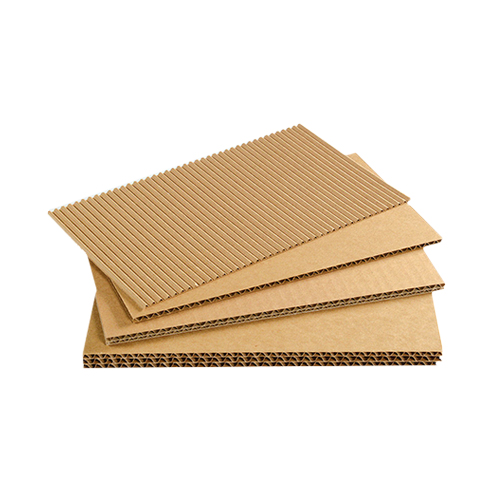
The industry today has multiple types of paperboard, which it uses for diversified packaging purposes. Seeing the multiple benefits of paperboard, a wide portion of product packaging comes from paperboard. With the use of multiple printing techniques, the industry produces amazingly alluring product packaging boxes. This guide describes those types of paperboard, their benefits, and various printing and formation techniques the industry prefers for paperboard.
Even though the paper itself originated around 105 AD, the journey from paper to paperboard took around 1800 years. In 1830 the first-ever machine to produce paperboard on commercial scales was invented, which later on paved the way to modern paperboard and its types. Before the use of paper and paperboard for packaging, industry and the business world mostly relied on natural, unprocessed resources like leaves, shells, and gourds. Fabric production from fur and later on, baskets from grass became the early means for product packaging.
Before paperboard packaging, most of the packaging came from metals and glass. The need for flexible packaging gave rise to paperboard packaging in the first place. Another factor that aired the fire of paperboard packaging was a massive need for packaging at commercial scales. The history traces the first use of paperboard packaging to as early as 1839 when an American jeweler Aaron L. Dennison first produced, for self and other jewelers, rigid boxes for commercial use.
Since the production of paperboard, the industry is constantly improving on the paperboard quality and types. The first paperboard to be produced was not as refined and rigid as the one you may find in today’s markets.
The paperboard introduction was itself quite futuristic, at least for the times when it came into being. Since then, a constant effort can be seen for the improvement of the paperboard quality and application. Such an interest in the paperboard is for all the paperboard’s practical characteristics as a raw material for packaging production.
In its early days, the progress was quite slow. However, for the last two centuries, the paperboard has seen quite some improvements, many thanks to the industry’s modern techniques and capabilities. Several paperboard formation techniques offer outstanding results from a quality and budget perspective. Originally, there are many different paperboard packaging formation techniques that the industry uses. Following are some of those techniques
One of the oldest paperboard formation techniques and its name does its justice, is the manual formation. In manual formation, it’s all began with preparing a dilute suspension of fibers, which forms a sheet of fibers intertwined. A wooden mold with wire mesh helps to remove most of the water from those sheets by first draining and then by applying pressure and evaporation.
One very prominent paperboard formation technique is known as sizing. This technique helps in making the paperboard less liquid absorbent. This technique is critical for paperboard because it helps make the paperboard more appropriate for printing using liquid inks. As additives, different chemicals help reinforce the ability of paperboard to resist liquids on touch and penetration, which is done for printing.
Two different types of sizing for paperboard include; surface and internal sizing. The internal sizing increases the humidity resistance in paperboard while the surface sizing is for the paper’s increased strength and rigidness. The most common of those additives used for paperboard sizing include; alkyl succinic anhydride (ASA), alkyl ketene dimer (AKD), and rosin.
Pulp molding is another paperboard formation technique which results in reliable and rigid packaging. In this formation technique, the recycled paper is converted into pulp using water. Then that solution is put into a mold to try and take shape. Pulp molding is a very effective paperboard packaging formation technique.
The use of wet pressing technology makes this particular technique all the way more practical. Old newspapers, corrugated packaging, and many other paper forms are recycled using the pulp molding technique.
For centuries, the process of deep drying is helping the industry with the production of paperboard sheets and plates for several packaging purposes. This process is also known as thermoforming. Besides paperboard, this technique is also for several other materials like paper and metals. Using a mechanical technique -punch, the paperboard is radially drawn using a forming die.
The deep drawing is one of the most economical and practical paperboard packaging formation technique. Most commonly, deep drawing is used with paperboard with a plastic coating for better practical results. This technique is preferred as it is practical to create paperboard packaging in various shapes through this process.
Being an eco-friendly material, paperboard is often preferred over plastic and glass. However, paperboard does not have as effective barrier properties as of plastic. Using paperboard coating and various finishes, the barrier properties of paperboard are enhanced. Kaolin coating is very popular for paperboard formation as it offers it a smooth surface besides enhancing its barrier properties.
Moreover, thin UV coating after paperboard printing makes the paperboard resist environmental factors for a long. There are several options in UV coating regarding surface texture and feel.
Paperboard is one of the industry-favorite materials for packaging production. This is because of the many benefits which the paperboard offers for packaging production.
For product packaging, there is a dire need to produce precise solutions. The paperboard is flexible and very easily customizable. Using various formation techniques and dies, it is possible to produce paperboard packaging in various shapes. A variety of different designs and box shapes come into being when the packaging industry uses paperboard for innovative packaging. Hence, paperboard covers a major portion of overall product packaging the world needs and uses.
Product packaging primarily focuses on protecting the goods for better seller profits. Losing product integrity can result in a loss for sellers. The paperboard ensures reliable and rigid packaging solutions for a wide range of goods. On the other hand, consumers go for more appealing packaging. Here, paperboard again comes with promising results. Coated paperboard offers appealing and productive packaging solutions towards which consumers are attracted naturally.
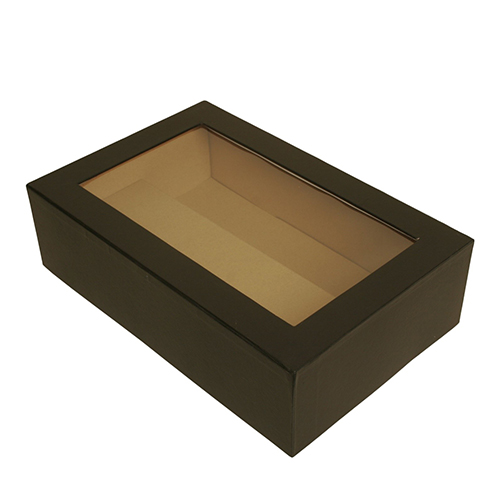
With all of its uses, paperboard is helpful in saving the world. It reduces the carbon footprint in the industry that uses the packaging massively. However, paperboard can be recycled and made for the use of other products. Even if the paperboard goes into the landfill, it disintegrates much faster than normal plastic. So, it is not damaging to the surrounding environments.
So, in the future, if more and more companies set their designs on paperboard packaging, then it will be one of the most eco-friendly materials available in the market. Another thing about this packaging is cost-effectiveness. The recycling process lets the companies save their budget and spend that capital on their marketing projects.
Being a recyclable material, paperboard results in sustainable packaging. Sustainable packaging is the way forward for product packaging and, therefore, paperboard packaging.
The modern packaging industry relies greatly on paperboard for high-end retail packaging. From regular lightweight boxes to premium detailed, structural packaging, paperboard offers a long array of packaging solutions. The versatility in applications of paper is made possible by the availability of multiple grades of paperboard.
The following four categories of paperboard are an industry favorite for their countless astonishing characteristics.
As the name suggests, this grade of paperboard comes from bleached chemical pulp. Commonly, this grade of paperboard comes with top side clay coated. However, having both sides coated is also an option for this paperboard grade. Coming from bleached pulp makes this paperboard white inside out. Having a smooth surface, this paperboard grade is ideal for graphical/printing use. Pertaining to its strength, it easily is creased, die-cut, and embossed, making it ideal for structural and detailed packaging solutions.
This paperboard grade is available in the industry from 200 to 600 gsm to serve at multiple levels of packaging. Furthermore, being an FDA compliant paper stock, this category of paperboard is also very practical to use for a wide range of food packaging. It is a medium-density paperboard. around 80 percent of the SBS contains bleached hardwood while the remaining 20 percent comes from bleached softwood.
Coated Unbleached Kraft comes from unbleached virgin kraft fiber. This paperboard is not white from inside like SBS; instead, it retains its natural brown color. The inner layer is of unbleached virgin softwood fibers, which is surrounded by a relatively thinner layer of unbleached virgin hardwood fiber. The top layer of this stock is a clay coating that provides it with a soft, white, and smooth surface for printing.
This stock’s finished sheets are quite strong, rigid, and tear-resistant pertaining to large pine fibers that make them perfect for a wide packaging application. In some grades of unbleached kraft, the industry sometimes uses recycled kraft for economic purposes.
Paperboard is recyclable, and one of the resulting paperboard grades is coated unbleached kraft. The paperboard coming from multiple resources is recycled to form CRP. This recycled board uses a kaolin clay coating over a top ply layer of white pulp in order to make it print-worthy. This paperboard finds a wide range of applications in the food and beverage industry for the purpose of packaging.
Non-bending Chipboard is a very thick paperboard grade that comes from recycling newsprint and used corrugated stock. Being thicker than other paperboard grades, Non-bending Chipboard is mostly preferred for set up boxes and rigid packaging solutions. This paperboard grade offers an excellent weight to strength ratio. This paper is not-so-good for printing. Therefore, after the box production, printed paper wrap helps the packaging box with its looks.
| Grade | Solid Bleached Sulfate | Coated Unbleached Kraft | Coated Recycled Paperboard | Non-Bending Chipboard |
| Fiber | 80% virgin bleached hardwood
20% virgin bleached softwood | 90% unbleached virgin pine
10 percent of hardwood kraft fiber Kaolin Coating | 100% recycled fiber
One side coated | 100 percent recycled paperboard |
| Appearance | Clean white | Natural brown color on the back and front white coating | White coating on the top side with the grey backside | Natural brown color on both sides |
| Common Application | Confectionary, Personal care, medical and tobacco packaging | Frozen, dry, and raw food, beverages, auto motives and electronics | Set boxes, soap, laundry detergents, processed food, and tissues | Setup boxes, secondary packaging, and containers. |
| Print Quality | Very high printability on smooth white surface | The coated surface is very practical for printing | White coating introduces higher printability | not very printable |
| Calipers | 8-24 pts | 14-30 pts | 14-40 pts | 20-85 pts |
| Strength | Moderate strength | High strength | Acceptable strength | Very high strength |
A wide variety of shapes and structures are possible to achieve using paperboard like cartons, set-up boxes, fiber drums, cans, and solid fiber boxes. In short, it makes most of the retail packaging markets see. However, different paperboard grades serve different market sectors to ensure even better appropriateness for the packaging. For more elegant and sophisticated packaging, like cosmetic, wet & frozen food, the medical and tobacco industry requires Solid Bleached Sulphate is used.
For heavy-duty and robust packaging, for which the hardware, dry food, and beverage industry asks, Coated Bleach Kraft and coated recycled paperboard are more suitable. On the other hand, non-bending chipboard is a good option for packaging cartons and rigid boxes.
Some products like food, ask for packaging to be more considerate from a safety perspective. The paperboard particles can transfer from the packaging to the food. To ensure a safety level for paperboard stock for food packaging, the industry makes use of Gas Chromatography, which highlights the presence of different substances.
Paperboard is available for packaging production in variable grammage. How much thick a paper is, describes for the paperboard its strength as well as weight. Choose a paperboard grade following your packaging needs. Strength offers reliability while weight adds expense.
Paperboard is quite a rigid material for the production of product packaging. However, its surface is not as smooth and elegant as the market quality standards demand. Therefore, choose a coated paperboard whenever making printable paperboard packaging boxes.
The packaging industry keeps on introducing new and innovative box shapes and styles for packaging. However, whenever using paperboard for a new box design production, start with prototypes to know if the box is dependable enough. Going directly into mass production can render the investment sunk for otherwise trackable design errors and flaws.
Coated paperboard offers elegant and sophisticated print. However, to ensure print quality persistence and longevity, a reliable finish is a necessity. There are plenty of finish options for printed paperboard like UV coating and foiling. Choose a finish that complements the products or publications.
Paperboard is a very basic material for packaging production. There are multiple methods for the printing of paperboard packaging. However, a coating on paperboard helps refine the print quality and outlook. The following are the most prominent of those printing methods for paperboard.
Offset lithography uses an aluminum plate bearing the image to be printed. Inking the image on the plate and then shifting that ink to, first, a rubber sheet and then the paperboard results in printed paperboard. Offset is good from dual-tone to CMYK color combination for printing.
Flexography uses a printing plate with a rubber relief on it. After inking the rubber relief, the ink is subsequently transferred to the paperboard to get it printed. Flexography is more like stamping. Flexography has an extensive application, especially in the packaging industry.
Digital Printing is the most recent addition to the printing methods for paperboard. There are two primary types of digital printers that are practical on an industrial scale.
Inkjet printers use nozzles to drop ink droplets on the surface to create an image on that paperboard. Inkjet printers are usually good for short-run print media and publications.
In xerography, ink particles are transferred to a metal cylinder, known as a drum, by selectively introducing an electrical charge on the drum. Later on, these ink particles are subsequently transferred to paperboard sheets by rolling the drum. The toner particles are melted into the medium to make sure of perfection in the print application.
For paperboard packaging, the use of digital printing is rare. One key reason for this is the cost of digital printing. This is why, for short-run publications, the industry mostly prefers digital printing.
Rotogravure, commonly known as gravure, uses a cylinder to engrave the image which needs to be printed. Later on, that ink is transferred subsequently to the paperboard for a fine and long-lasting print. This is a very common technique for mass production of print media and long-run publications like packaging and newspapers.
Paperboard comes in variable forms, and therefore, there is not one particular printing method that is perfect for paperboard printing. For paperboard packaging, the industry mostly prefers the offset printing technique as it offers reliable as well as economical printing on commercial scales.
Is paperboard cheap?
Paperboard is one of the most economical and cost-effective materials industries use for product packaging.
Is paperboard Packaging okay for food products?
There are several food products, like raw food and processed food, for which paperboard packaging is perfect.
Is paperboard Water Resistant?
No. However, with several formation techniques and coating, it is possible to add somewhat water-resistance to the paperboard.
Is paperboard flexible and foldable?
Yes, these are two key perks paperboard offers for product packaging.
Can I recycle paperboard at home?
Yes. It is possible to recycle paperboard at home using a pulp molding technique.
Cardboard boxes are one of the most underappreciated boxes. Yet, they are indispensable to our daily lives. They hold most of our ornaments at home and other personal mementos when we move to different places and shift our hoses. They are used as breakfast cereal packagings. Other uses of cardboard include children’s science projects, shaped into notice boards, and many other things.
As a lot of things have become mundane, hardly very few though has been put into how and why cardboard was invented in the first place. As a matter of fact, cardboard history is rarely mentioned or documented anywhere over the internet. Nevertheless, we have cobbled together the history of cardboard through several trusted sources and patents. Further in this guide, we will start to piece together the story of omnipresent cardboard boxes.
The beginning of cardboard dates back to three to four thousand years ago in China. They began the use of cardboard with treated Mulberry tree bark specifically to preserve food. However, the very first use of commercial cardboard boxes is often credited to M.Trecerton & Sons in England back in 1817. Whereas, cardboard box packaging was developed in the same year in Germany.
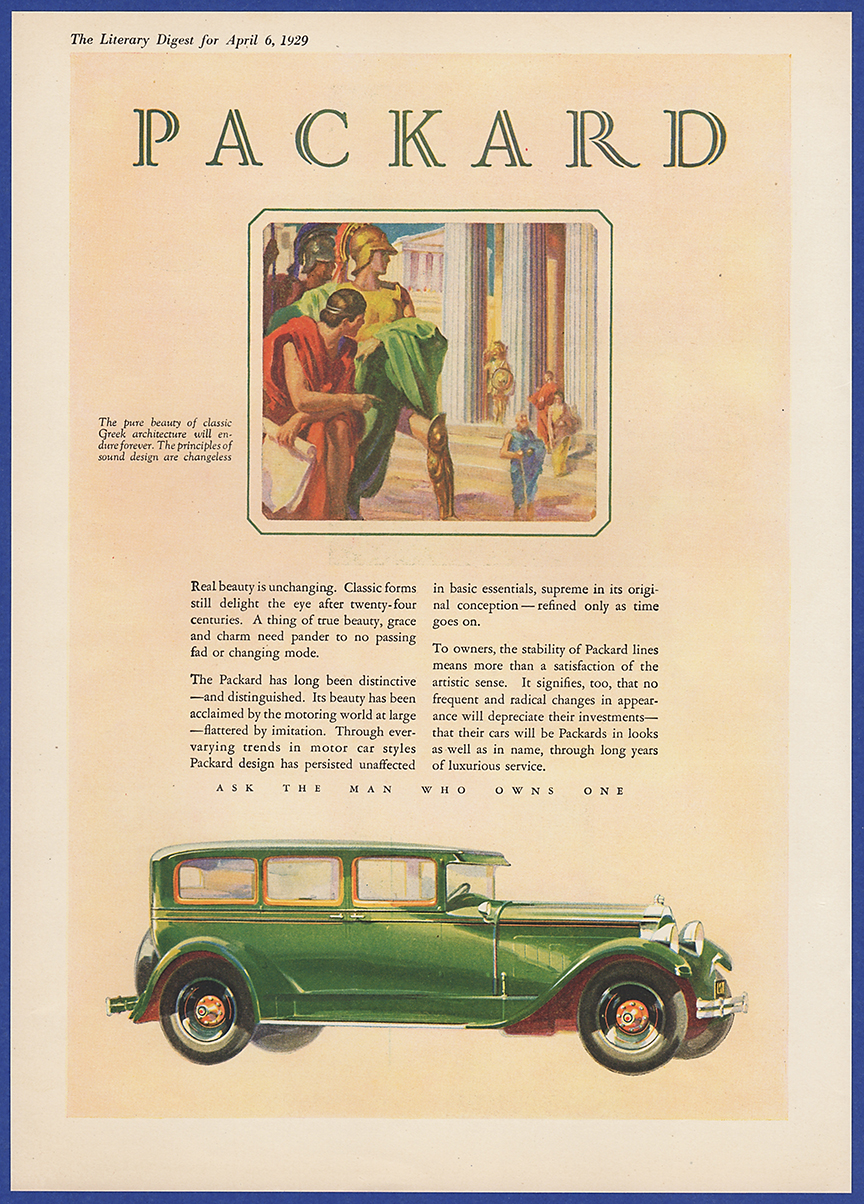
Here is a picture of cardboard used as a postal card in the early 1990s.
Afterward, cardboard slowly made its way to the west through the trading between Europe and China. Hence, cardboard ended up in the European region in the 17th century. The first printed mention cardboard came from a manual called Mechanick Exercises, written by Theodore Low de Vinne and Joseph Mixon. In that manual, it reads:
During the Second World War, cardboard served for a number of essential purposes. In the late 1930s, Germans promoted the British empire to issue a protective mask for every citizen, which was delivered in cardboard boxes.
Years later, the cardboard box extended the ways we store, protect, and ship products and do business.
In particular, cardboard boxes have been integral to the online shopping boom. In 2016, online sales in the US crawled over $322 billion. However, this number is keep growing till date. From small startups to giants like Amazon, businesses’ reputation depends on how assuredly the product is getting delivered to the customers. Cardboard boxes made that dependability possible.
In modern times cardboard is used for a number of things. It used to display posters and display board at science fairs, and hardcover books are made with cardboard, business cards are made using the same material. Other uses include fiber tubes, hard cigarette packs, storage boxes, and much more.
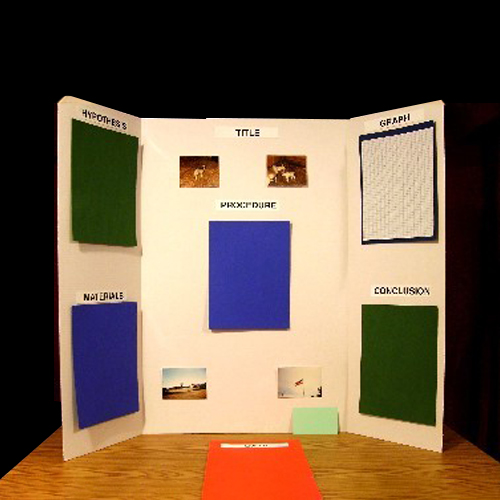
In the industrial sector, cardboard has proven to be the best material as compared to other boxes. It has become a major transportation packaging in mass consumer products. Here are some of the prominent benefits of cardboard boxes.
In the packaging industry, there are three main types of cardboard.
You will get this material mostly with shipping boxes. A typical corrugated fiberboard is made with three-ply construction. Two smooth surfaces are placed on the outer side, and a wavy corrugated layer is placed in the middle.
It is excellent for project construction as it is easier to cut, bend, and fold, and yet has a high strength to weight ratio. Such high sturdiness is due to stable arches inherent in the fluted corrugated inner wall. The corrugated fiberboard can be further sub-categorized into three types.
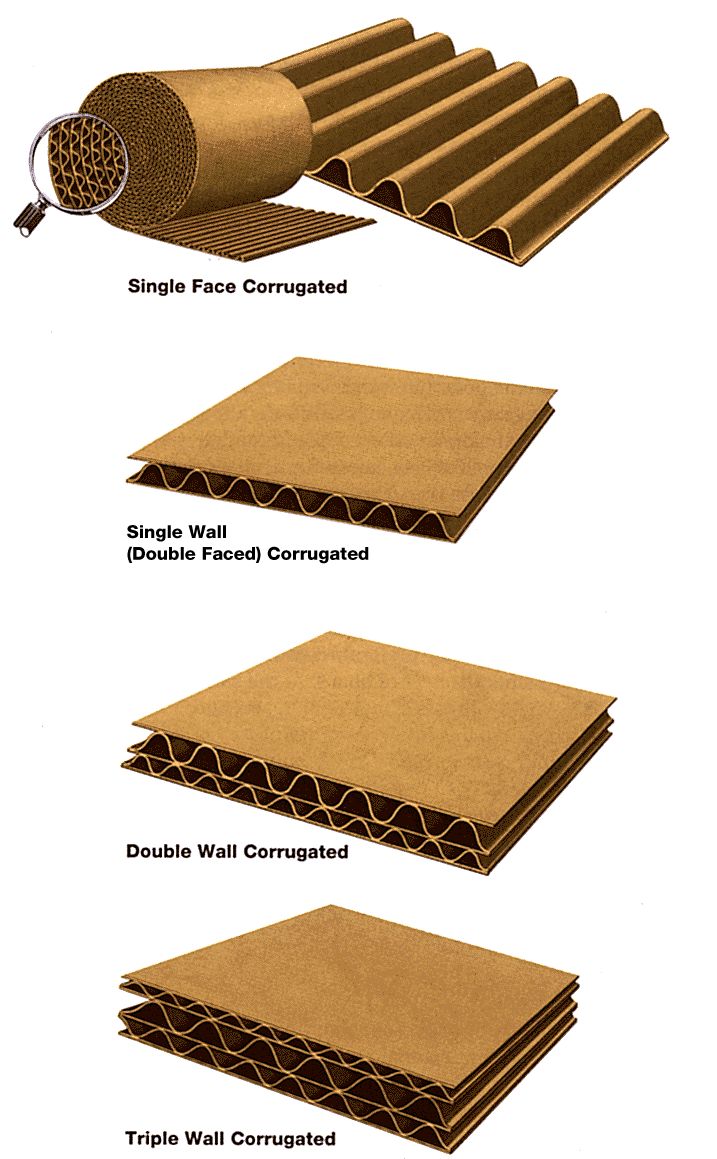
Also known as chipboard, is typically single-ply cardboard. You can find them at the back of notepads or thinner cereal boxes. It doesn’t have the strength of fiberboard but is much easier to bend, which makes it ideal for papercrafts.
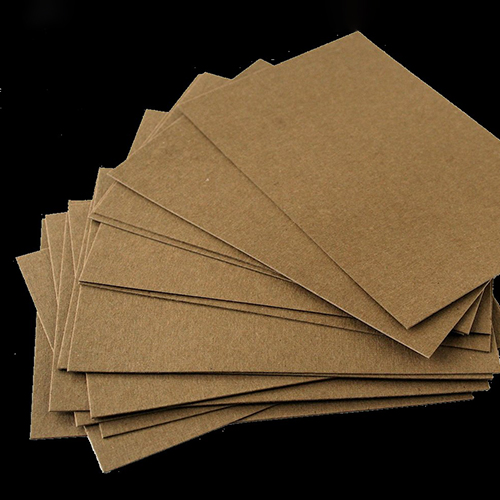
It’s popularly used to make tubes, found in wrapping paper, paper towels, and toilet papers.
Matte Board is mostly used in picture frames. It is multi-ply coated with fibreboard with one smooth side. Perfect for making cardboard circuits.
Cardboard being one of the most affordable yet durable materials in the market has made its place as an immediate holy grail for all businesses. Various businesses, including retail, healthcare, food, and appliances use cardboard material for maintaining the sanctity of their products.
Attributes found in the cardboard material:
Estimated research provides us with info and statistics that 90% of the companies use cardboard material for protecting their shipments as well as their products. Cardboard is a convenient option for all the business because of its various positive aspects. It not only provides safety and protection to the products but also gives your sales an immediate boost.
Industries that tend to use cardboard boxes:
Each industry uses this material as per its convenience. However, the ideal and sole purpose of cardboard material is to provide extreme durability ad protection to all the products kept inside. All of the industries and businesses use cardboard material to send in their products in a sufficient manner. Henceforth, cardboard can be concluded as an ideal material for packaging purposes.
Like every other material, cardboard also requires some basic tips to make boxes out of it. For instance, cardboard boxes can be made in different styles as well as designs. The purpose of these designs and styles is to assure that the boxes are worthy of buying. On the contrary, every box is made with a simple step of joining techniques. Possible joining techniques include gluing or perforation.
In gluing, the boxes are joined together with the help of a sticking aid. Gluing the boxes makes them strong, robust, and reliable. Moreover, once the boxes are glued, they tend to stay upright and stiff. On the contrary, perforation techniques aid in joining the boxes without any sticking aid. For instance, different ends and curves are made on the boxes to make sure that the boxes can be joined together. Keep in mind that the perforations made on the boxes make it easier for the boxes to be re-combined.
Moreover, you can add some adorable box designs too. These box designs will aid in highlighting the value of the cardboard boxes and their noncliché designs:
All the boxes including boxes are required to be printed in an exquisite manner. This will not only add an enthralling effect on the boxes but will also be of great help. The market and companies use different printing techniques to print different types of things on the boxes. For instance, stickers, logos, animations, illustrations, photographs, and different color schemes are printable on the boxes. However, each application requires a different technique that involves experts. Cardboard is a thick material which is why not many printing techniques are applicable. However, there are two sufficient choices.
Methods that can print different things on the boxes are:
Digital printing is one of the best methods to print anything on cardboard boxes. Also, it may be considered as a simpler method. It is so because there is no hassle in printing the boxes. The method consists of easily shifting images from one’s documents to the specified sheet or the box. Digital printing is cost-effective, has fast turnarounds and it also offers direct label printing on the boxes. Therefore, you can count on it to create an alluring effect on the boxes.
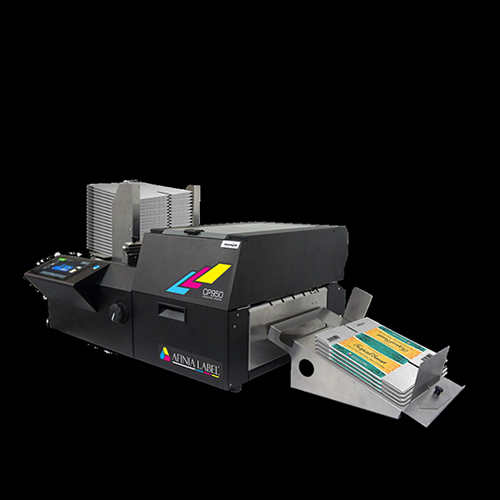
On the other hand, offset printing is also possible on the cardboard boxes. However, it is an extremely different method. Offset printing may be a better method but is much more complicated than digital printing. In this method, the print screen is first shifted on a rubber blanket and then to a plate. Afterward, the image is then printed on the cardboard box. A water-based film is applied to the image less area, whereas the ink roller transfers image on the box.
Furthermore, printing is incomplete without colors. Therefore, two amazing color schemes are obtainable. Each color scheme adds to the vibrancy and radiance of the boxes.
CMYK stands for Cyan, Magenta, Yellow, and Black. These are the primary colors used for printing on the boxes. The industry uses these four colors to make various shades that will enhance the appeal of the boxes. An array of colors can be made while using CMYK which is why it can be of great value. Cardboard material can persist in this method of printing conveniently.
Furthermore, PMS is quite different from CMYK. It is abbreviated as PMS and the full form is Pantone Matching System. The idea and choice of colors available here are lesser than CMYK. It requires only two prints whereas CMYK requires four. Also, PMS streamlines printing techniques and cuts down the cost. Therefore, it is a cost-effective technique suitable enough to print anything on cardboard boxes.
How and where can you obtain cardboard boxes?
The market offers various packaging companies that create reliable as well as affordable boxes. The packaging companies give you a chance to showcase your creativity by offering various designs and customization techniques. Therefore, you can get your boxes from any company that is suitable enough (for instance, Packaging Bee, Royal Packaging, and GoTo Packaging)
How are cardboard boxes manufactured?
Cardboard boxes are made up of flutes of linerboards. These flutes keep adding to the thickness of the box. The box has flutes that are sandwiched between two liners. The liners are made up of recycled papers that are left without any use. Also, the flutes are available in a variety of thicknesses which is why they can be found in almost every width.
Why do food companies use cardboard boxes instead of plastic plates?
As it can be seen that almost every food company uses cardboard boxes to deliver their food. The use of plastic is extremely harmful to nature. Therefore, sensible companies tend to use disposable cardboard boxes other than harmful plastic plates. Also, all the food companies that are available in the market offer deliveries and take away in the same cardboard boxes because of their biodegradability.
Kraft was introduced in Germany for the very first time. It is produced through wooden pulp through a chemical reaction. The production of Kraft was an amazing discovery because it is also found by recycling waste, and you can find it from any junkyard/ garbage yard.
Kraft is a German word means which means “strong.” This material contains 80% of the wooden sulfate pulp. Sulfate use during the manufacturing of Kraft paper.
There are two different types of Kraft production processes. Kraft material is made from strong pine woods and then utilized as the Kraft we use in the industries, and the second way is to recycle it from trash and waste.
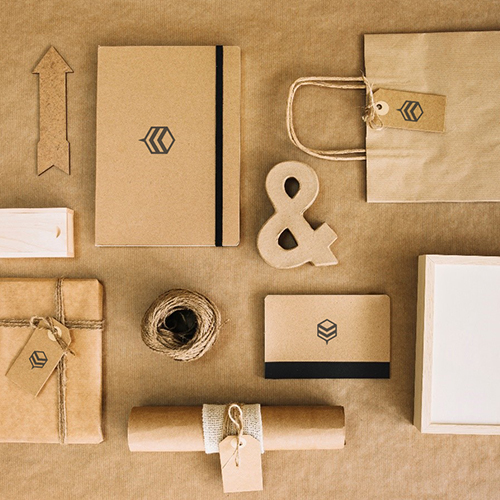
A Kraft material can be recycled 24 times and can be used after that for many things. However, Kraft is defined into two different types’ white and brown Kraft materials. Usually, the white Kraft paper is costly than brown Kraft paper. But for quality wise, the white Kraft paper is the best, and those boxes have next-level quality because white Kraft paper is made from the internal layer of the pine tree.
The Kraft process (so-called because of the superior strength of the resulting paper, from the German word Kraft for ‘strength’) was invented by Carl F. Dahl in 1879 in Danzig, Prussia, Germany. U.S. Patent 296,935 was issued in 1884, and a pulp mill using this technology began in Sweden in 1890.
After the history elaboration of Kraft boxes, this material is now made in all around the world and used for every product in the world with millions of new Kraft box styles in multiple colors from in and outside as well.
Just like mentioned above, in today’s world, Kraft is formed by waste, and it is recyclable too. The material can be recycled 24 times, and after that, the recycled Kraft is yet used for egg trays.
So, these are the recycled process of Kraft material. Kraft is also slimed to form Kraft paper; this paper is mostly used for edibles just like fresh burgers, fries, steaks, etc.
Kraft materials are used for many different purposes. The first thing is that you can make any type of packaging box from Kraft stock and Kraft paper. There are unlimited new features that you can act upon on this material.
You can get the perfect printing process and mild printings as well. There are some of the best features of Kraft in the packaging industry that can absorb paint and gives amazing colors, includes many different shades on any side.
However, the next step of the beneficial way from Kraft is to use them for many household products such as kids can use Kraft boxes for their toys, and women can put their makeup in them or many other things as well.
Why can people use Kraft boxes for their equipment?
Answer: Because Kraft is an eco-friendly material containing very less amount of chemical reactions and more natural ingredients. If you want to burn Kraft, it will not harm the atmosphere much and doesn’t produce any type of smoke that can be dangerous for the health.
So, this is one of the best benefits of the Kraft packaging box with its brown and white color.
When we hear about the word Kraft, some image must appear in our minds. For some people, they think of simple brown paper, and some about sandwiches warp. For others, they think of packaging material.
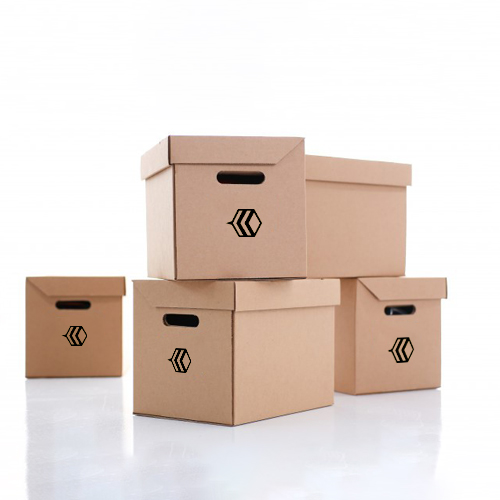
Did you know there are other types of Kraft Paper available? And each of them has its unique features. Here are a few types of Kraft paper you didn’t know.
Natural recycled Kraft paper is an eco-friendly option to have. Still, it also has strength and durability to carry products, and it comes in different weights standers from 30-70.
It is the most common type of Kraft paper, generally used in picture frames to provide durability in backing. And it is used for a variety of purposes like craft and bordering on edges.
It is another type of Kraft Paper that has as many colors as in a rainbow. Vibrant hues make them perfect for use in all crafts Projects.
One of the common types of Kraft paper that is available in the market is natural Kraft paper. And it is used as a heavy lifter. It is clean and durable and required a high level of tear resistance.

It is similar to Natural Kraft paper in its durability and strength. White and Bleached Kraft paper makes a powerful impact when you desire a clean appearance.
Many companies in the industry take advantage of custom printed Kraft paper versatility. For creating their packaging, wrapping, and other in-store displays.
These are the most common types of Kraft paper that are available in the world.
Business is the main domain line for the production of Kraft box because it makes it the curtain call of the production industry with much larger benefits along with the many new features as well. The material can be used for the customized box styles that everyone can use for their products for the longest run.
There will be special boxes made from Kraft for every product like:
| Cannabinoids Boxes | Tincture Boxes | Pillow Boxes | Electronic Goods Boxes |
| Chocolate Boxes | Wedding Cards | 5 Panel Hanger Boxes | Display Boxes |
| Hair Extension Boxes | Candy Boxes | Paper for Fast Food | Bath Bomb Boxes |
There are more than many different box styles that you can’t even imagine. But every product from edibles to the electronic good to cosmetic boxes, Kraft is the top-notch material.
As we mentioned, different types of Kraft paper earlier available in the market, and each of them is different from the others. In the same way, Kraft paper is used worldwide in various businesses and for different purposes.
The most common use of Kraft paper is in the in-packaging industry. Different types of boxes are made with Kraft paper for a wide range of products available in the market. And some of the other users are following.
Kraft Paper can easily be used for flooring to protect the surface during construction as well as manufacturing. Some use Kraft paper to avert the fiberglass from damaging the floor. And some use them to preserve flooring during remodeling and construction.
Over spraying can ruin any of your belongings. So, Kraft paper is used to mask the item to keep them safe from unnecessary overspray.
Having anti-slip Kraft paper is used between layers of bags, boxes, and materials to keep them intact during shipping. Pre-cut sheets palatalizing makes the product even faster. In the long its save the many by having an added layer of protection.
Kraft paper can also be used for a wrap of individual items. It provides protection layers at an affordable range than other alternate products. Companies use this because they want to deliver their product in one piece.
Kraft is one of the many products used to style your product in different ways and gives you the option to think forward and reach your target audience in style. There other ways to design your product with Kraft paper.
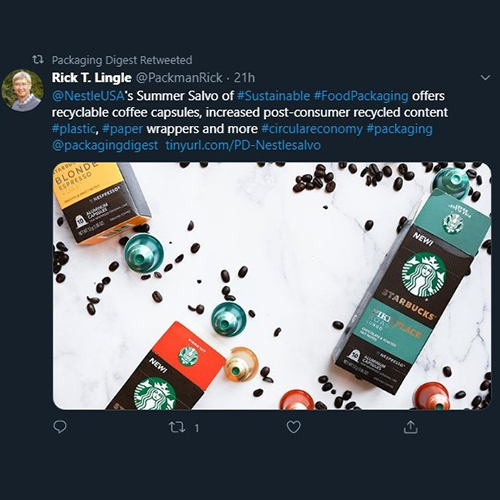
The Solid Review from Packaging Digest from Mr. Rick T. Lingle
The first and foremost reason for choosing Kraft is to convey your message. There are many topics globally about which you want to share your message to the consumer.
Caring about Earth is one of them since Kraft is biodegradable and recyclable, then it is easy for you to target audiences who are earth-friendly.
Do you want your product to look appealing and fascinating? Kraft paper packaging also gives an artisan feel to your product. The “brick and mortar” process is used in making Kraft paper. This Preserve hard work and artisan in Kraft durability and its grainy imperfection. Anyone appreciate a product that is crafted with care.
Packaging with Kraft Paper embodies the idea less is more. Something simple, colorless, and plain can stand out in the competition of hues, texture, and sheens. Kraft: no-frills minimalism renders bold sense. Customers would not trust the product that appears down-to-earth. The use of a few colors to highlight the main points attracts customers.
Printing on the Kraft materials is a little hard to stick up because Kraft absorbs paint; that why you have to push the paint limit more than the usual quantity. There are some printing processes which helps in turning the tables around for the products.
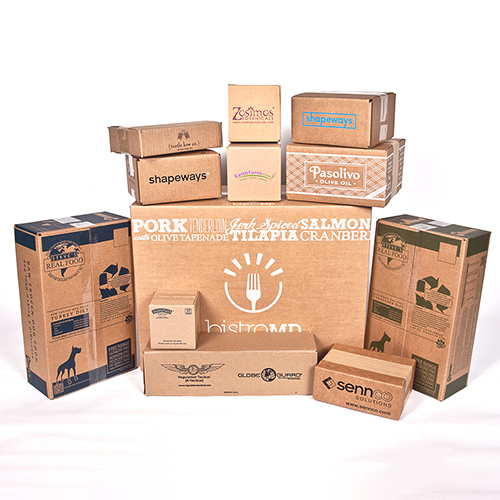
A method in which ink is transferred from a plate. To a rubber blanket and then on the printing surface. A combination of different colors with oil and water employs a flat image in offset printing. It is the best way for a bulk order of Kraft material boxes because we have mentioned that Kraft is a paint sucker; that’s why the more important is to use an actual amount of offset paint to meet the margin of a specific color limit.
Offset printing contains CMYK color patterns that are used by specific cylinders, and one cylinder only contain one color and gives multiple shades for your product boxes.
Is the method of printing images from a variety of media with the help of a digital-based process? It is usually used by professionals to print high volume or low volume with laser inject printers. And has a higher cost than traditional offset printing methods.
It allows you to on-demand printing. Moreover, it has a short turnaround time. Even you can use images to the left a unique impression.
Hues are fundamental, especially when your printing Kraft paper as it is eco-material and ideal for an organic and vintage feel. On Kraft paper, spot UV/AQ reproduce to avoid that CMYK prefers to print than the Pantone printing method (PMS).
It gives you a better finish and color. Kraft is not thought, but it is ideal for cards, tags, invitations, and things like weddings, light packaging, and folded products.
These are some usage and printing process which use especially following Kraft paper worldwide. Due to its eco-friendly and consumer-friendly nature, Kraft is getting more popular. These are things you need to before going to choose any material and printing process for your product packaging. Choose your desire thing wisely.
Coating Patterns is the knight in shining armor for Kraft packaging boxes. These contain some of the mind-blowing features that attract customers for the corner of the markets to once pick up the box and buy the product.
On Kraft stock box, the Matte coating is the best way to extremely advertisement partner, making it so elegant and awesome with a rugged feel and satisfied looks. However, there are many add-ons used to make the Kraft stock full of images explaining the worth of the products with a quotation that can motivate the surroundings too.
Therefore, the next coating pattern is gloss and satin. These two used to make some minimum participants on the Kraft stock tell a story about the product. Plus, the coating is the best friend of Kraft material.
Two methods to design a Kraft box. First is the die-cutting style, now die-cutting shapes this box perfectly. Now, this process is held by cutting a piece of Kraft for making the box; the piece should be more than the usual box size. Put one end to almost complete the other side of the box. This is what you called to “cut like a pro.”
Is Kraft Biodegradable?
Yes, indeed, the use of less chemical reaction acts upon Kraft makes it biodegradable. Which eventually makes it the best material for all the products that exist in States.
Is brown paper eco-friendly?
It is the most easily recyclable material, making it the most awesome and shiny paper in the industry. So, if you want to choose the best paper for packaging, you should choose brown eco-friendly paper.
Is Kraft stock better than other materials?
As mentioned, that Kraft is recyclable, which means it can use for many other purposes multiple times and with the magical eco-friendliness. Kraft paper is created from old forest wood, which makes it a completely un-harmful thing in the eco-system.
You have the whole plan laid out in front of you. So, pick up a pen and paper, note down the main points, and take your business on the go through perfect packaging.